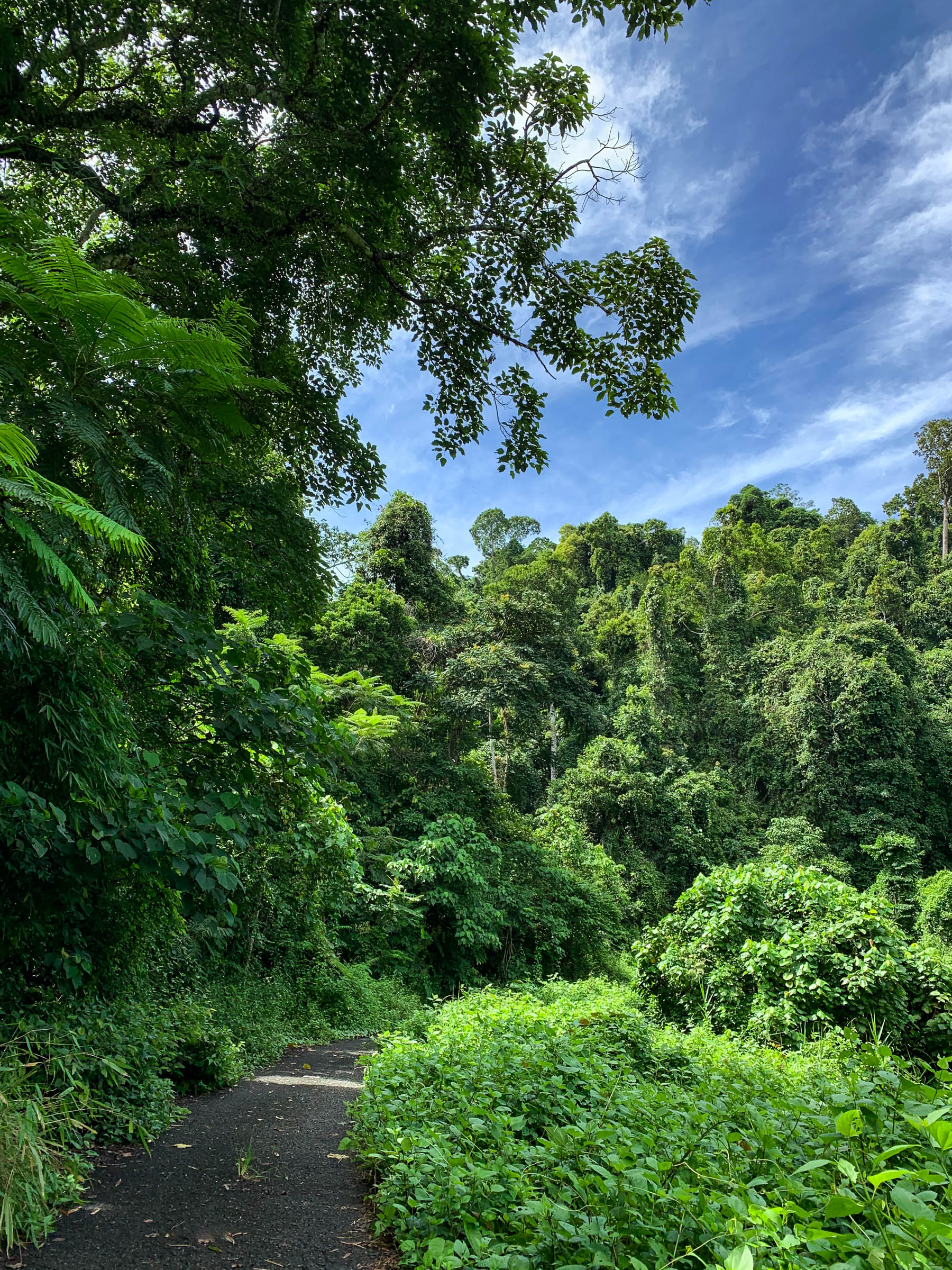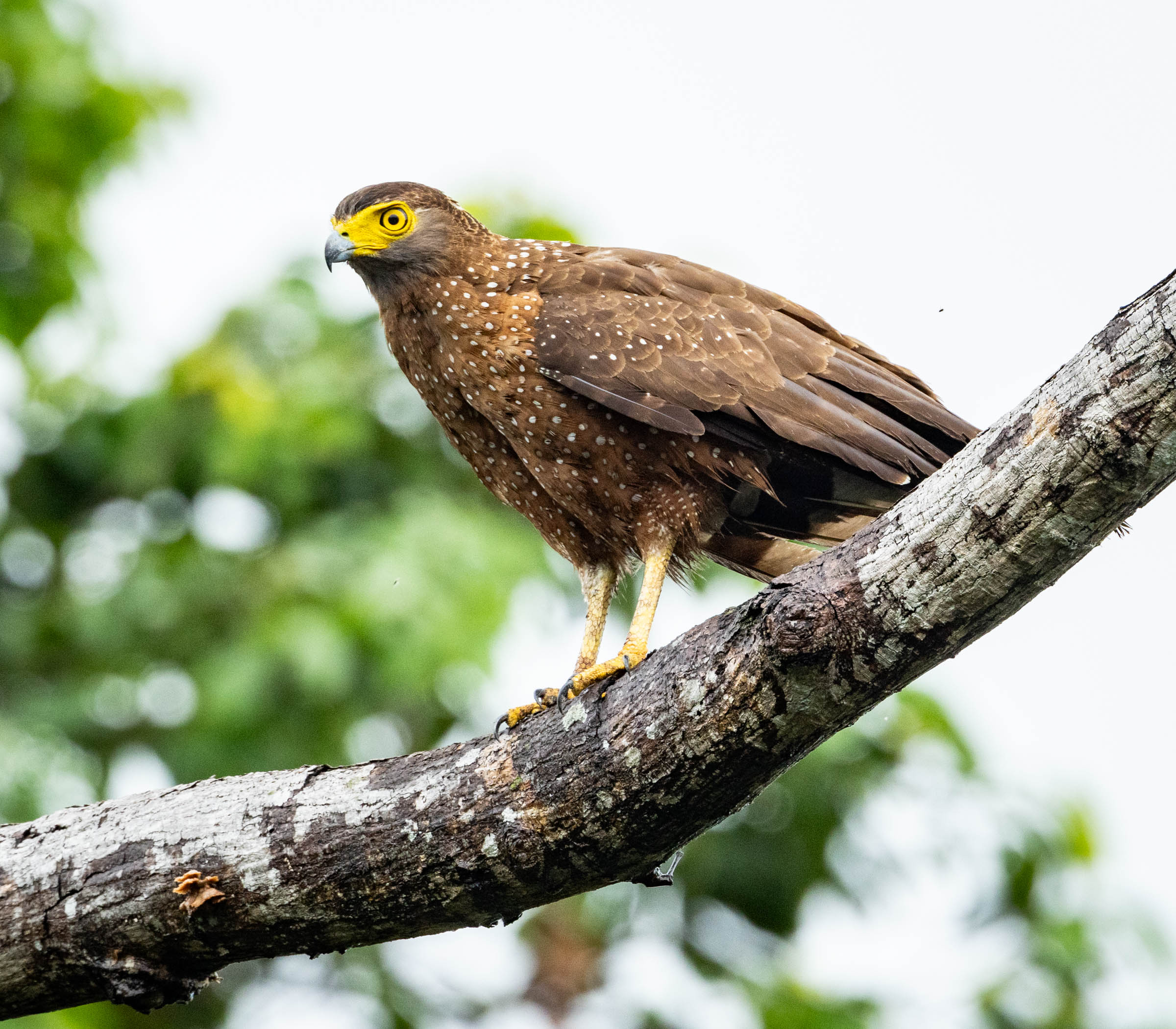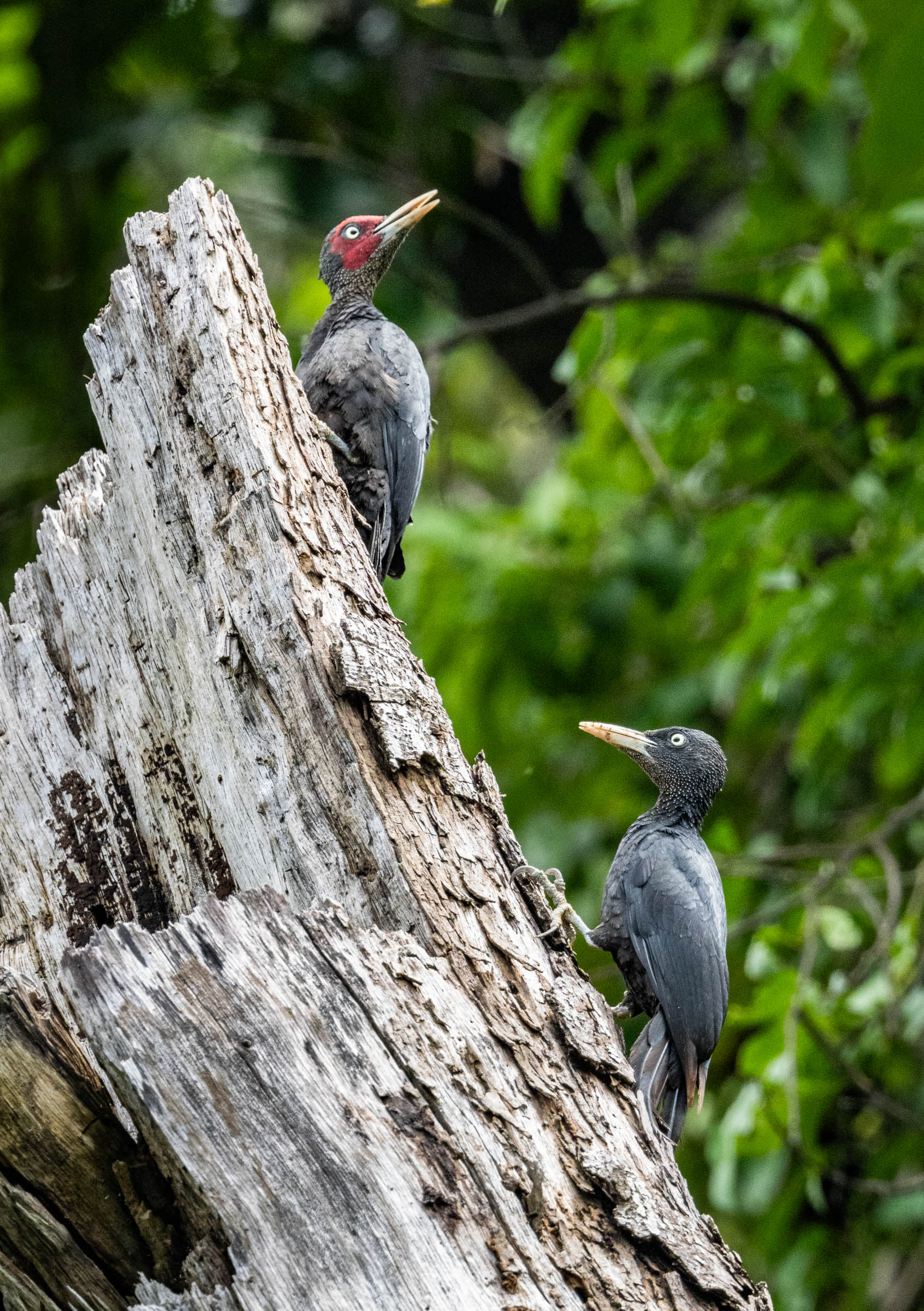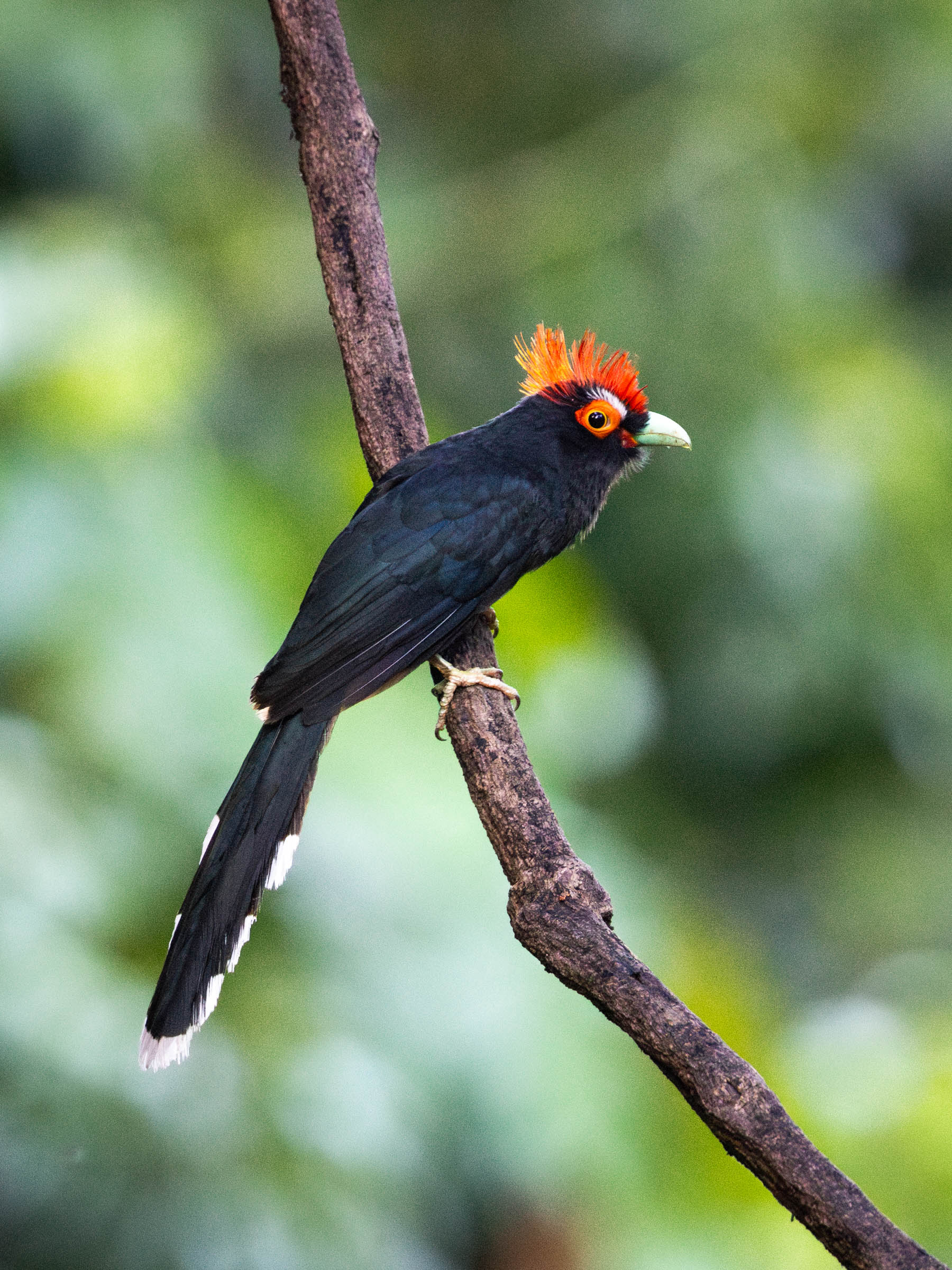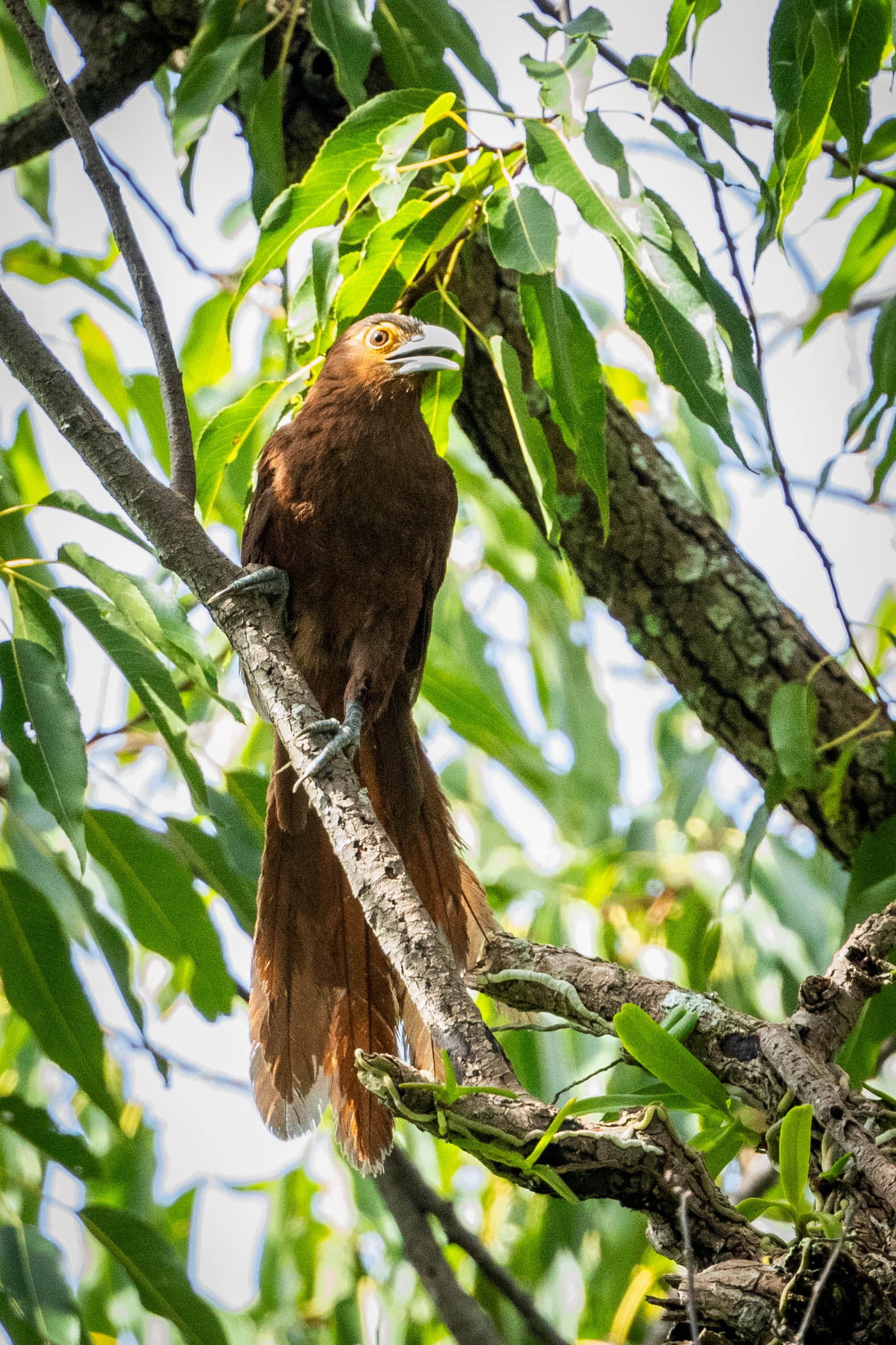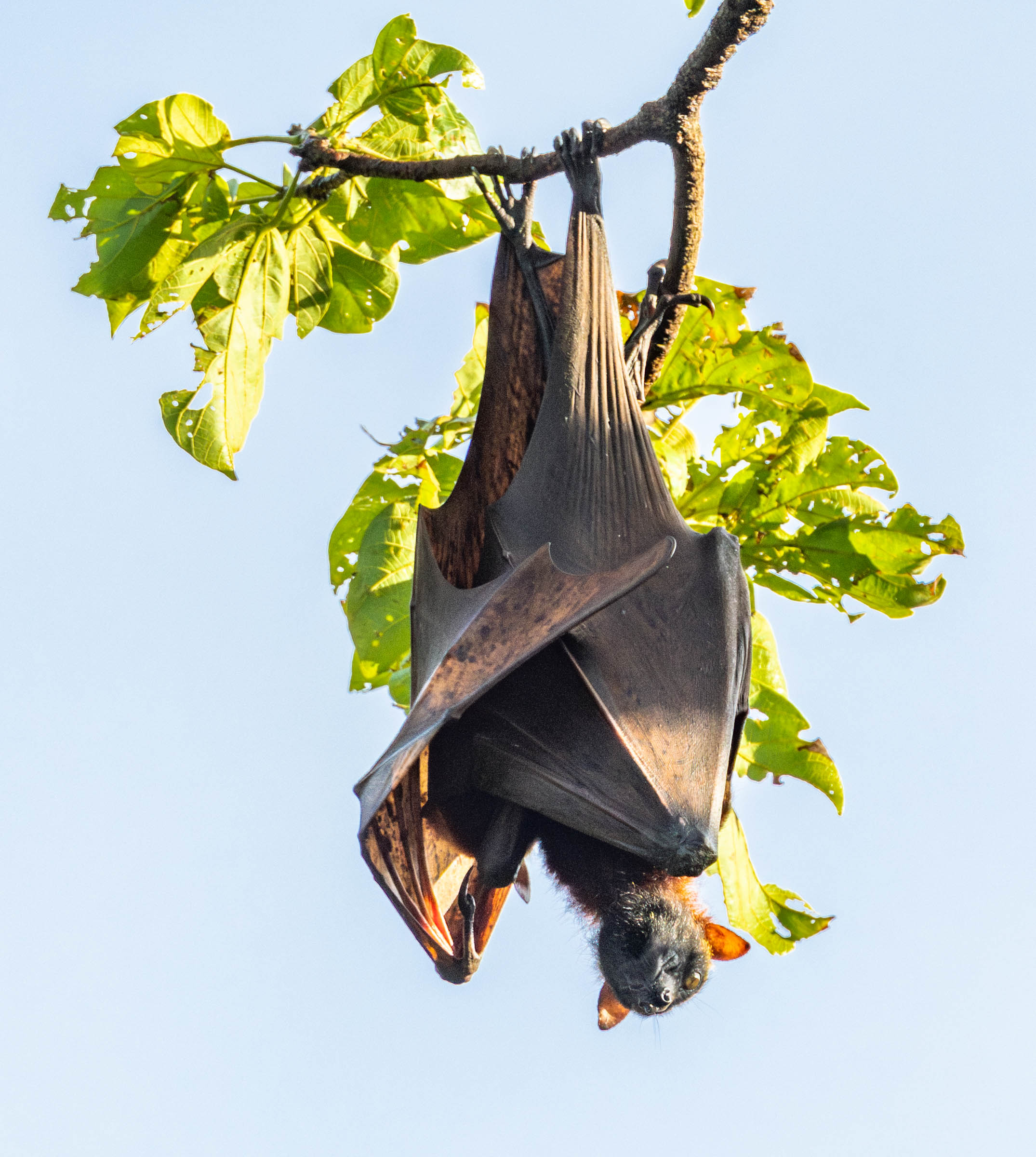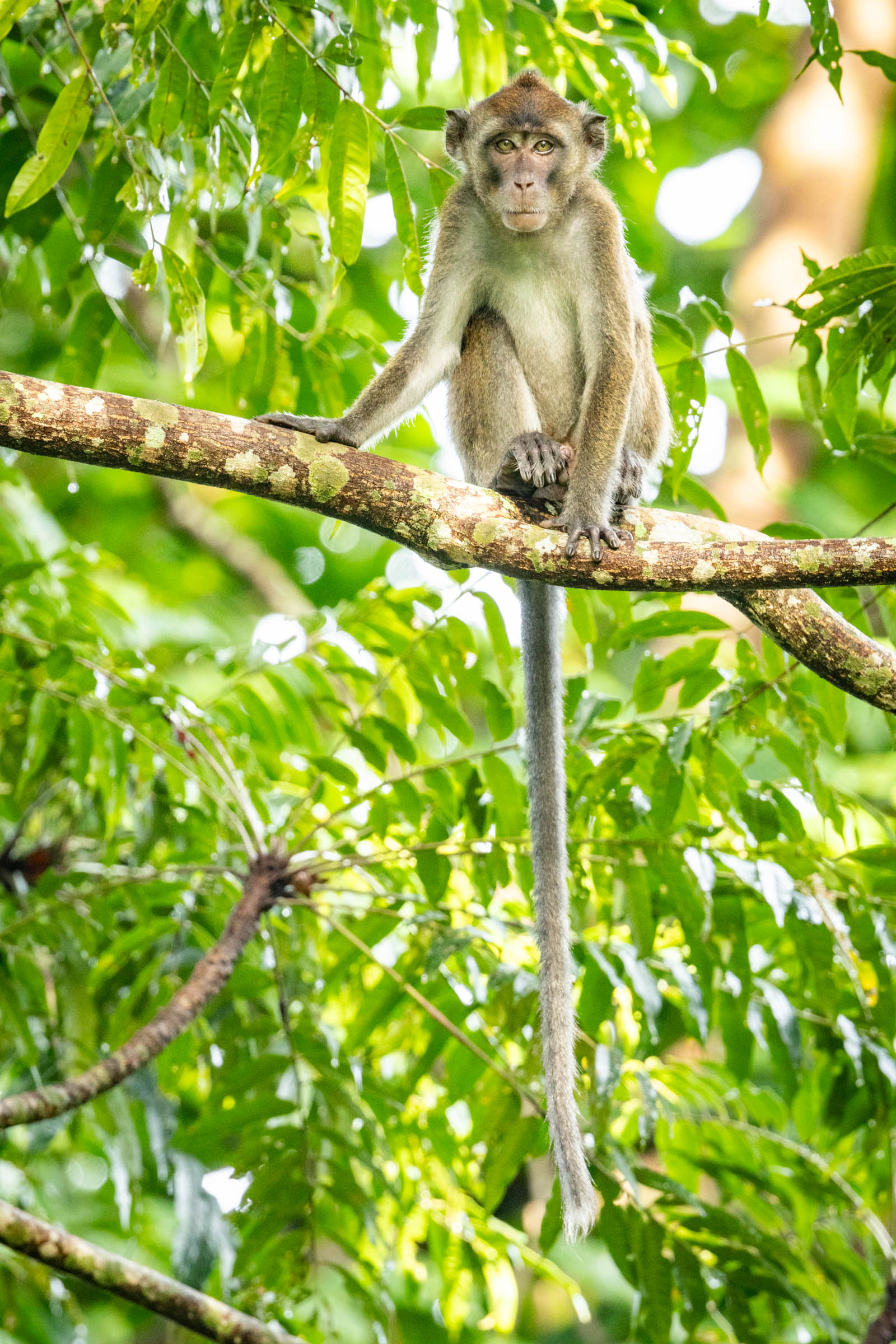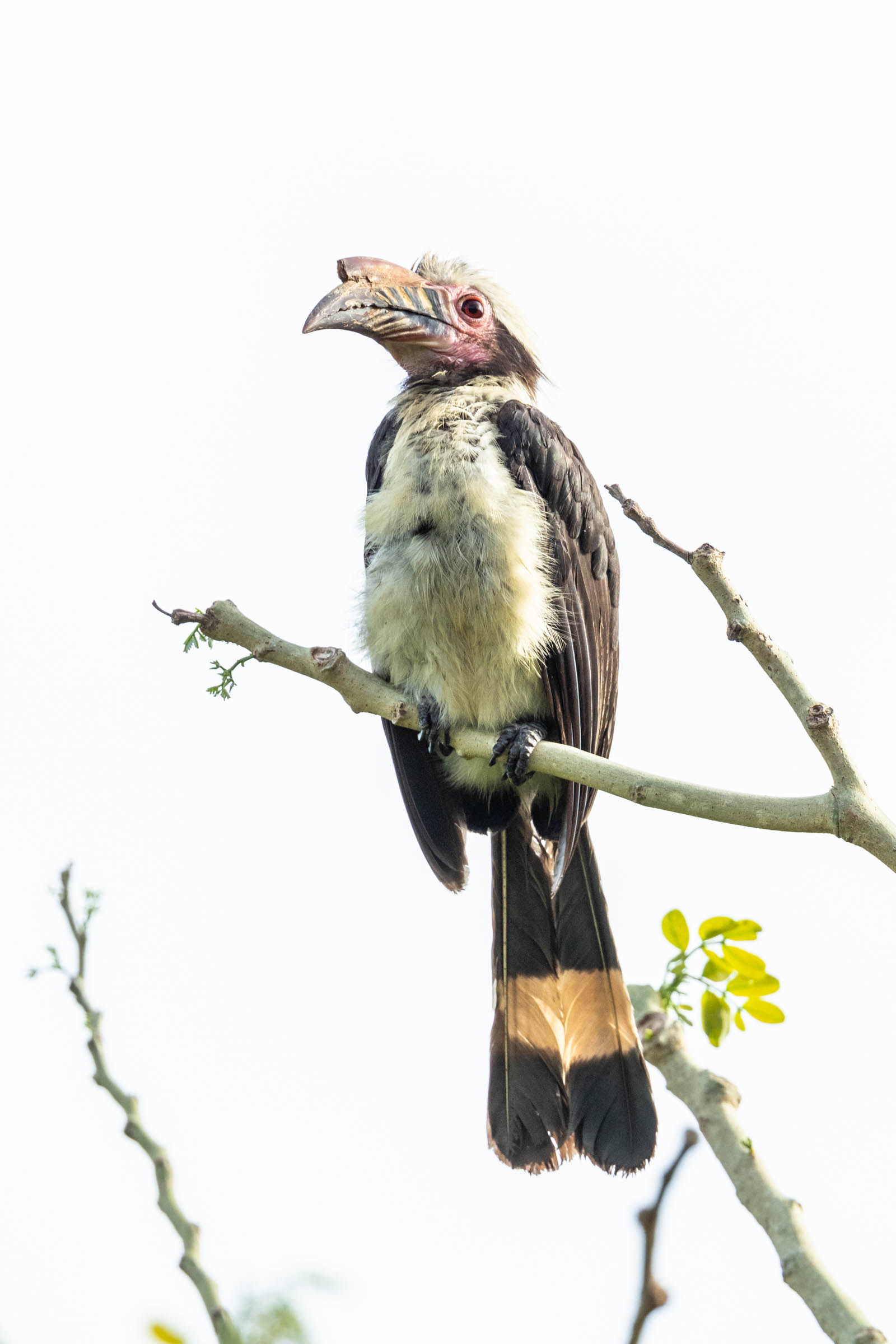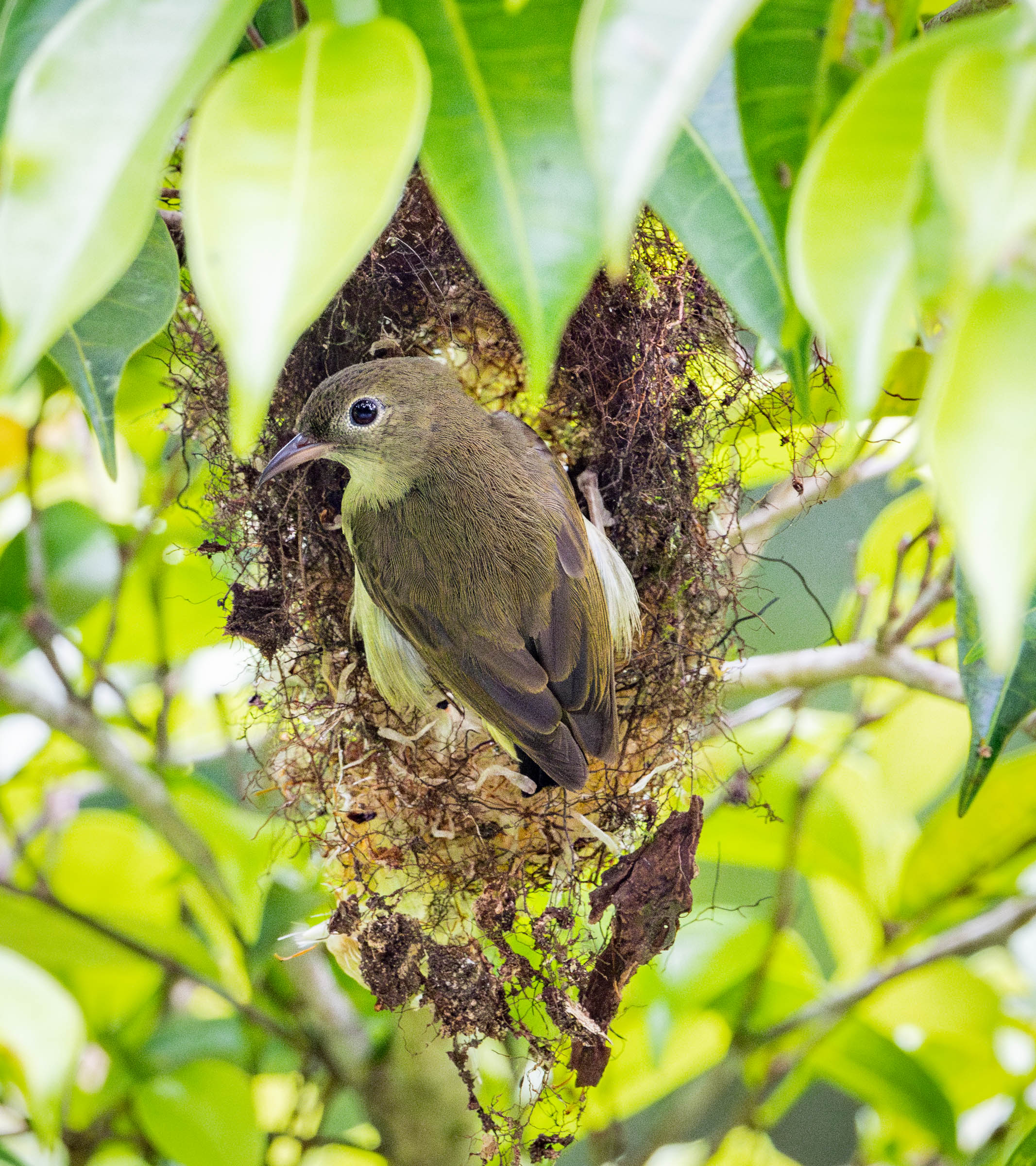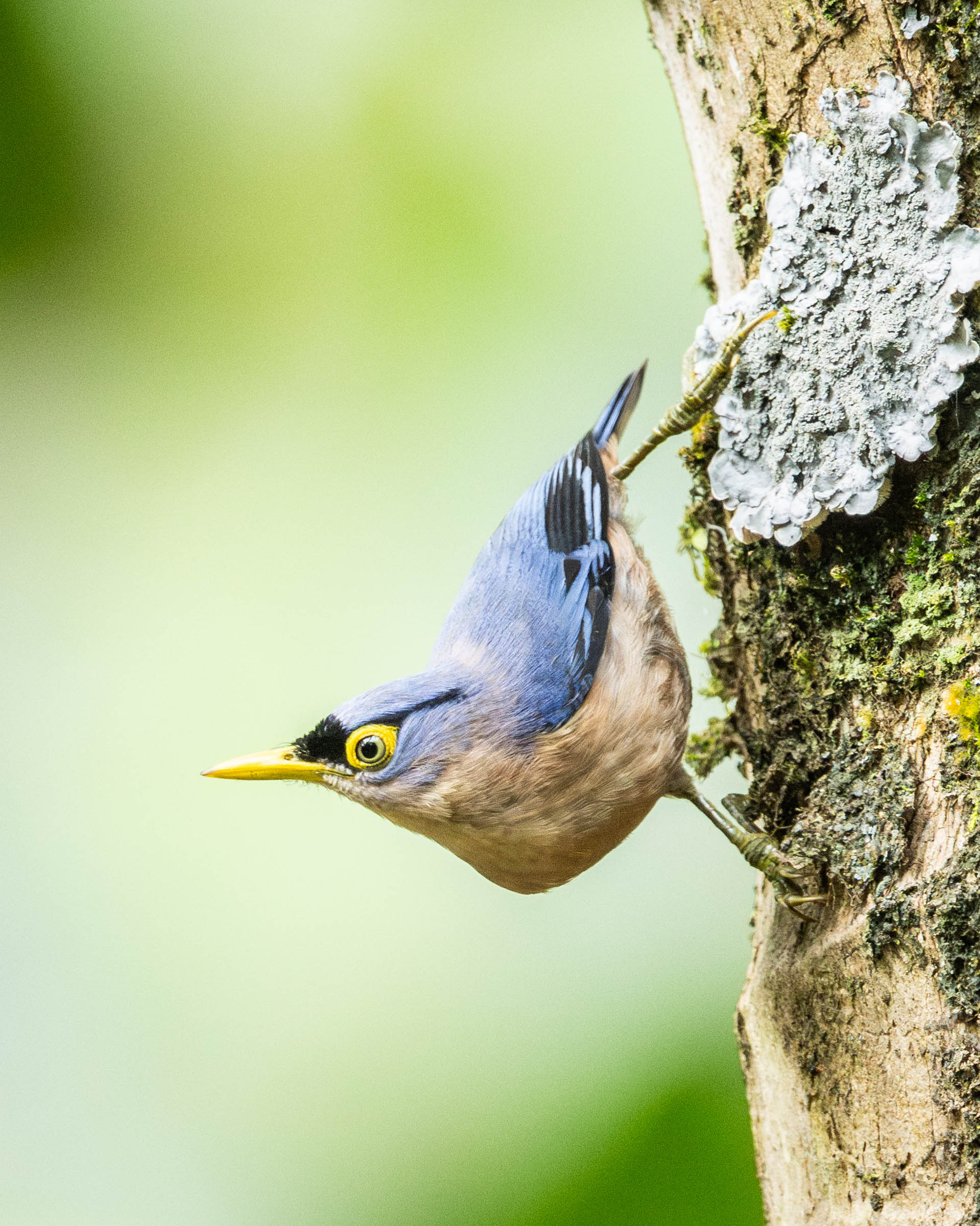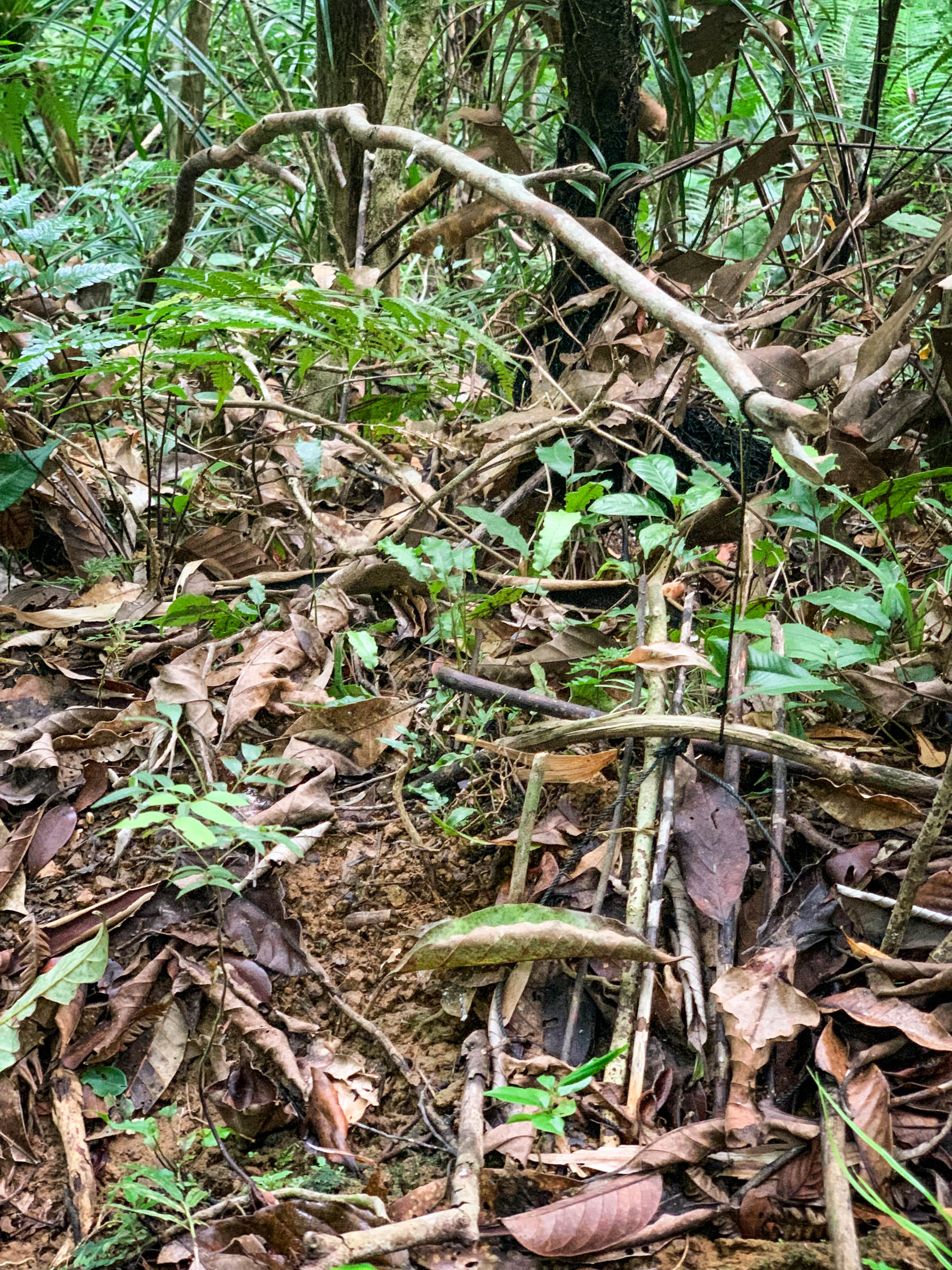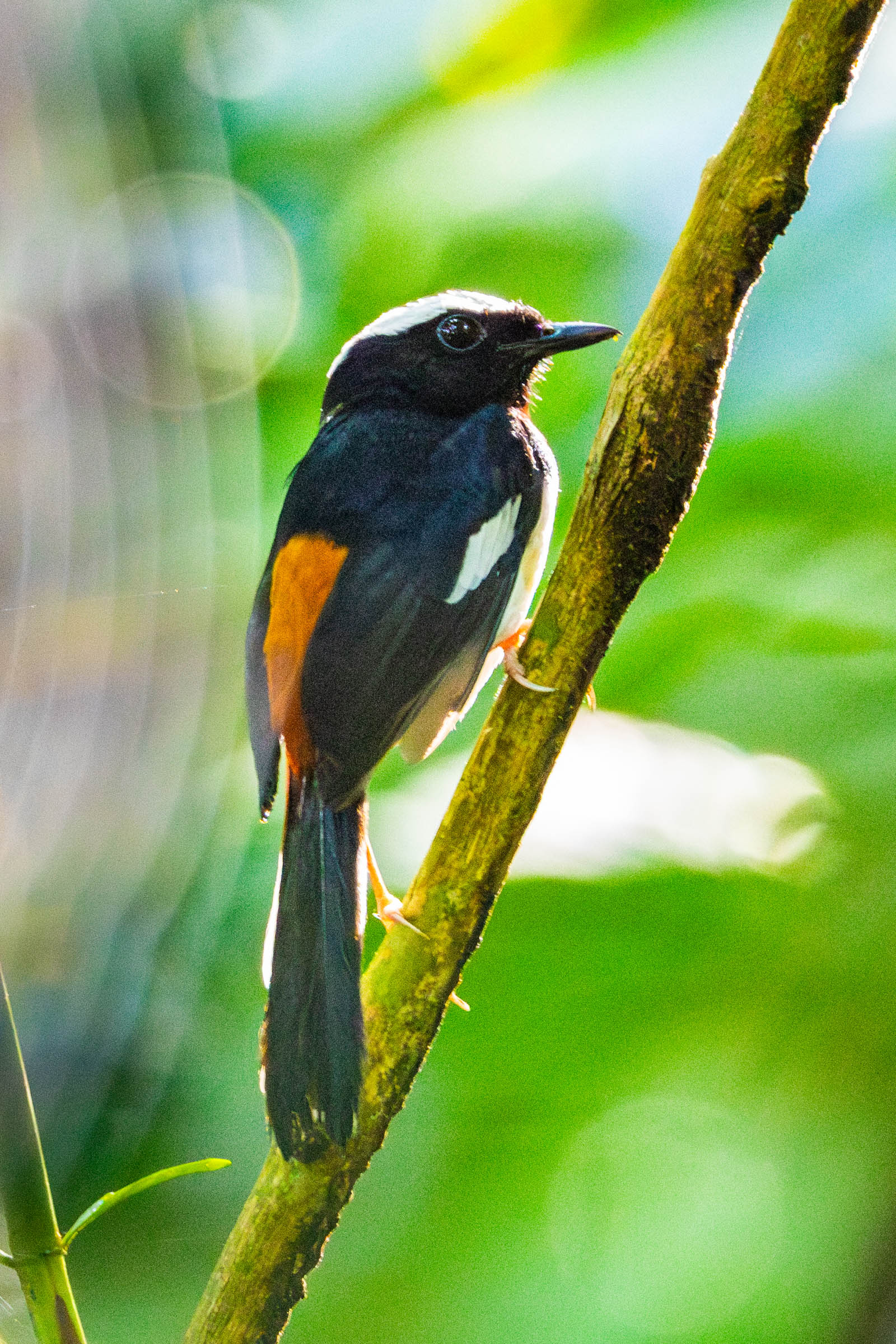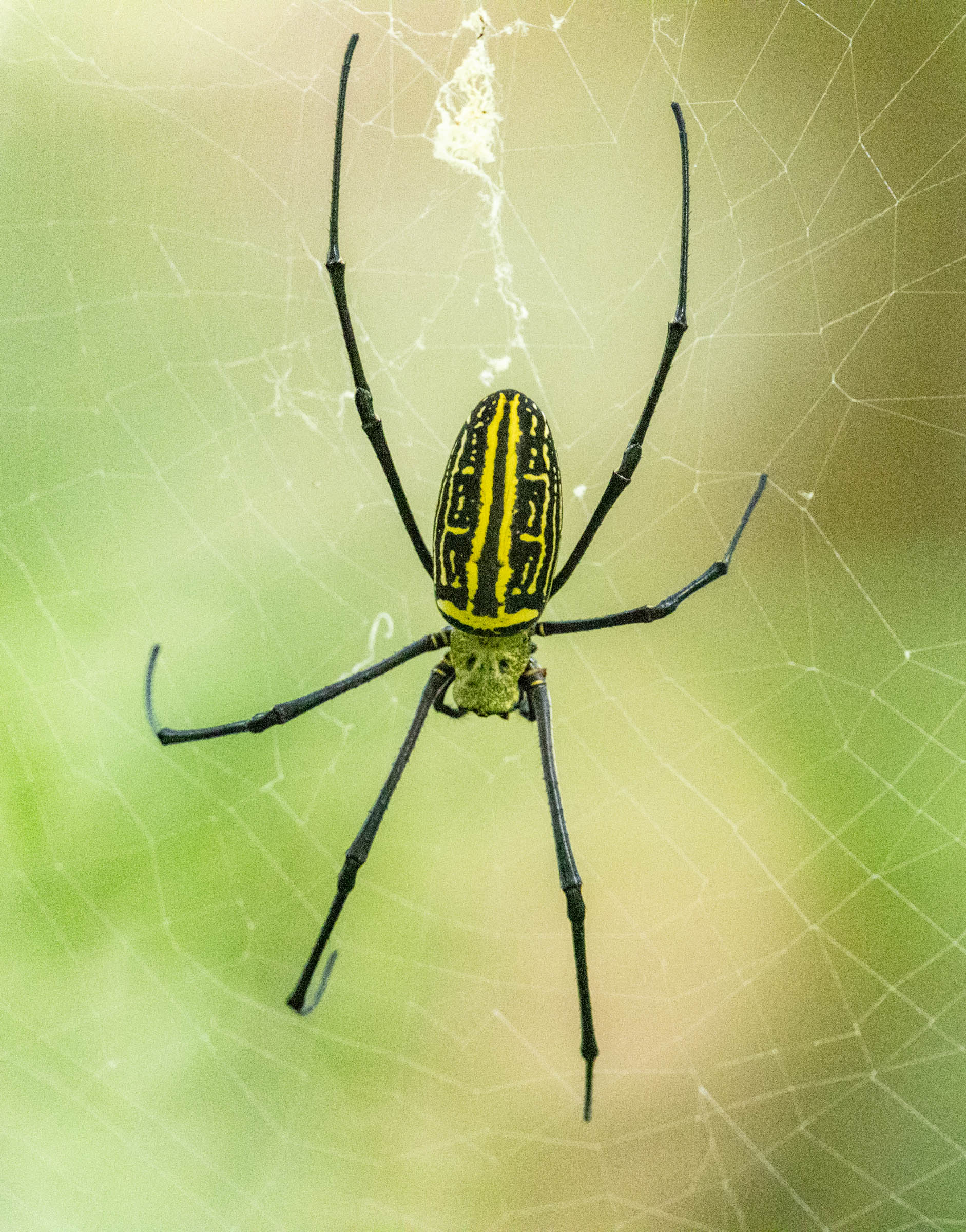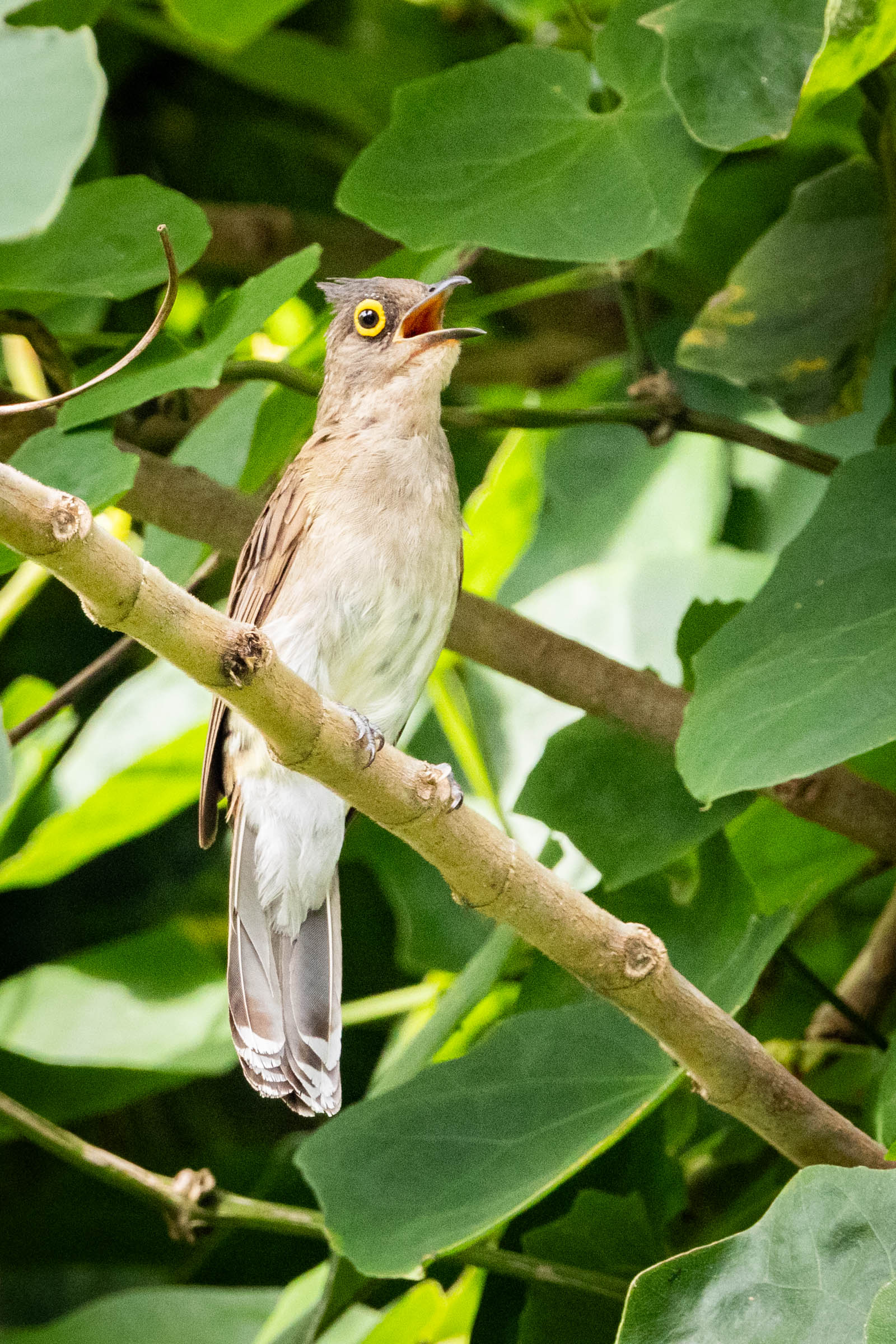I had an opportunity to travel to the Philippines for work, and decided since I was going all that way, I’d add a little extra time to explore new parts and new aspects of the country. One way to do that is via my latest passion; finding and photographing the local birds. The 7,500+ islands of the Philippines are home to numerous endemic species – those found nowhere else on the planet. Many of these birds exist in fractured ecosystems – small pockets of forest and other natural habitats that have so far managed to escape human incursions.
From previous visits to the Philippines, I knew getting around can be a challenge for someone unfamiliar with the topography, laws, logistics and the overall experience of driving in this country (including inevitably driving through Manila – one of the densest cities on earth). Getting to where the birds are requires a personal vehicle. Knowing where those places are, and most importantly, what to look for when you get there, takes local expertise. So, I enlisted a local Filipino guide – Nick, from birdingphilipines – whose help was essential in all these ways and more.
Our first general location was the area of Subic, about 2 hours west of Manila. This area was home to a sprawling US military base until 1992. For all those years, the local forests were protected from logging, farming, mining, settling… all the things that consume prime avian habitat. Old lowland forests are a rare commodity anywhere in the world, and the Philippines is no exception. There are birds (and many other animals) living in these forests which can be found nowhere else.
Almost right away, we found this Philippine Serpent-Eagle, drying-off from a recent rain shower, and getting ready hit the sky.
Brown-breasted Kingfishers are commonly seen hanging-out on the many wires lining the roads in the area. This is one bit of human infrastructure that’s perhaps beneficial to the birds, or at least acceptable.
One of the most valuable assets of old forests is a healthy number of large dead standing trees, known as snags. These trees are great habitat for insects of all sorts, which in turn are food for birds. In addition, the softer wood in these trees is often favored by woodpeckers for drilling-out nest holes. Woodpeckers make a new hole each time they nest. But these holes are later adopted by a myriad of other species – they exclusively nest in old woodpecker holes. When a forest lacks snags (such as a forest that is regularly logged), it has fewer nesting woodpeckers, and therefore fewer other birds that rely on an abundance of old woodpecker holes.
One of the largest and most prolific of these nest hole drillers is the White-bellied Woodpecker.
Its flashier cousin is the Luzon Flameback.
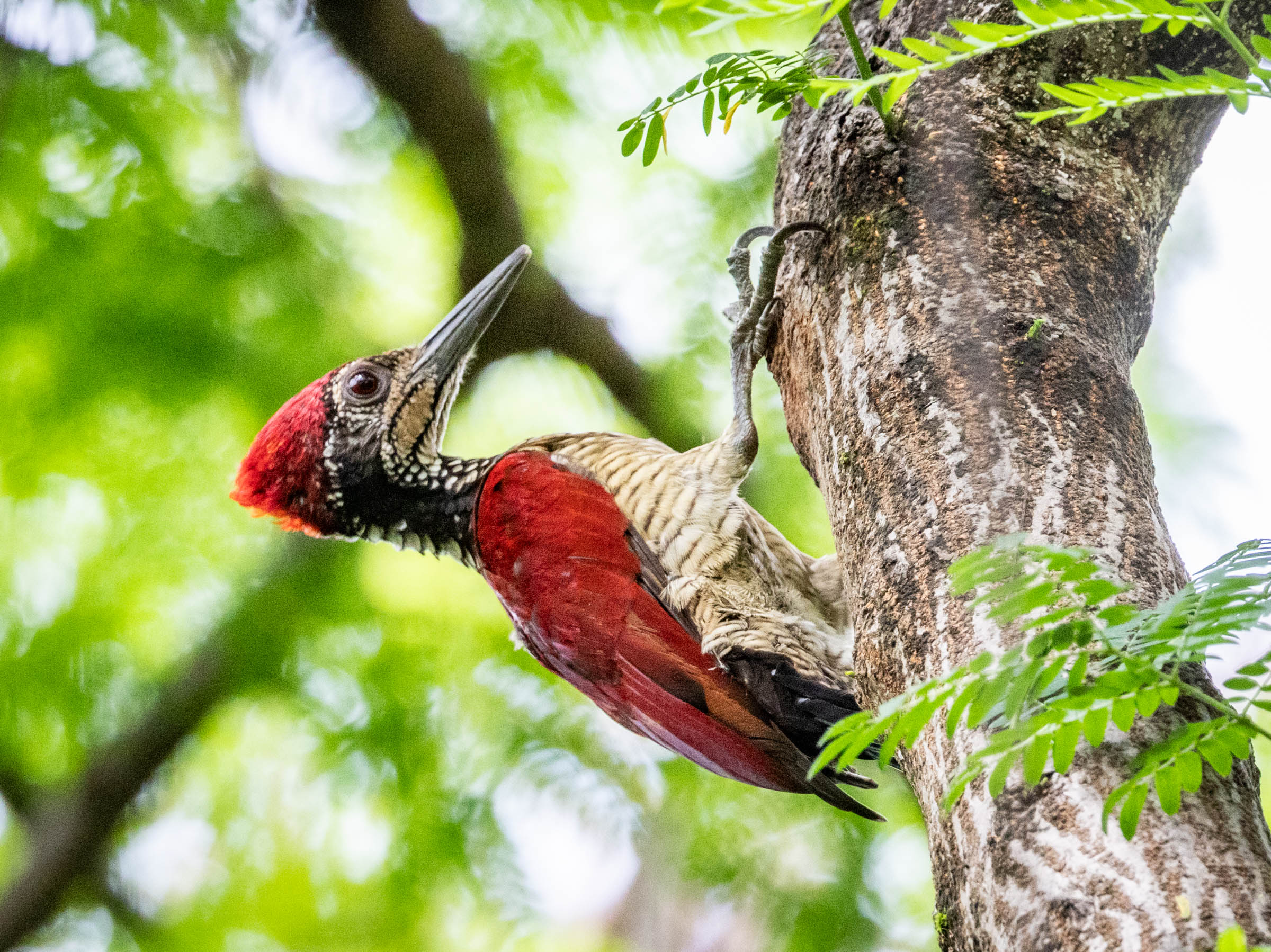
These woodpeckers are all endemic Philippines species. In addition, many of these are endemic to specific islands. For example, the Luzon Flameback is found only on Luzon Island (the largest island, also home to Manila). There are other species of Flameback with different color patterns endemic to other Philippine islands.
Rounding-out the “big 3” woodpeckers in this area is the Northern Sooty-woodpecker. The male has a red head, the female all black – a common theme in woodpeckers worldwide.
When you don’t know any of local birds, it’s not readily apparent which are common and which are rare. Though, I got a sense for this as we visited more locations. One of those more common repeated sightings was the Philippine Bulbul.
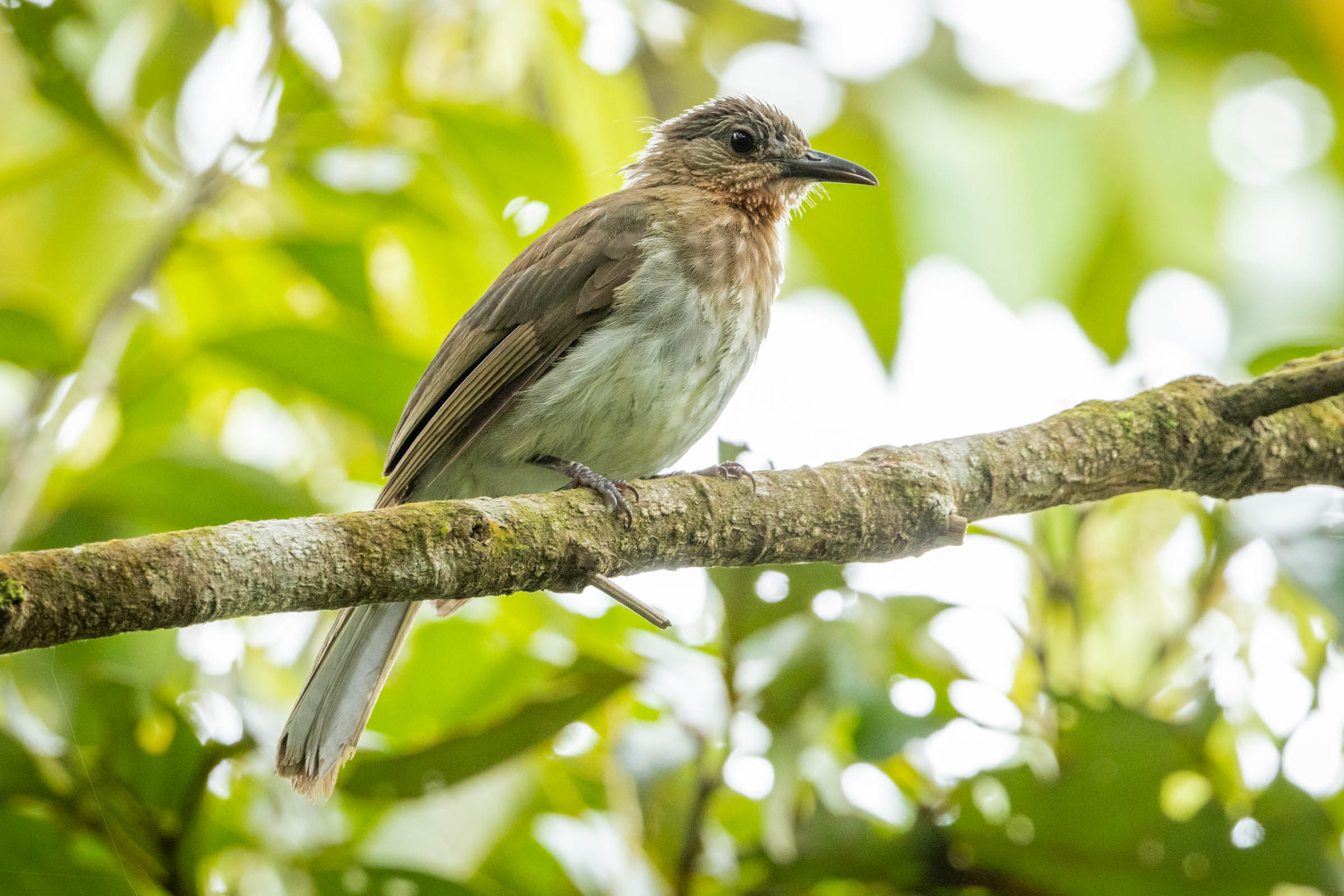
I saw the Collared Kingfisher in a few locations, a little larger and more wary than its Brown-breasted cousin.

I also got a sense for which families of birds are specialties for the environment. The forests of the Philippines are home to a number of unique doves. We saw the White-eared Brown-dove on a couple occasions.

The Yellow-breasted Fruit-dove might be colorful, but it blends-into the sun-dappled forest, making it difficult to spot.
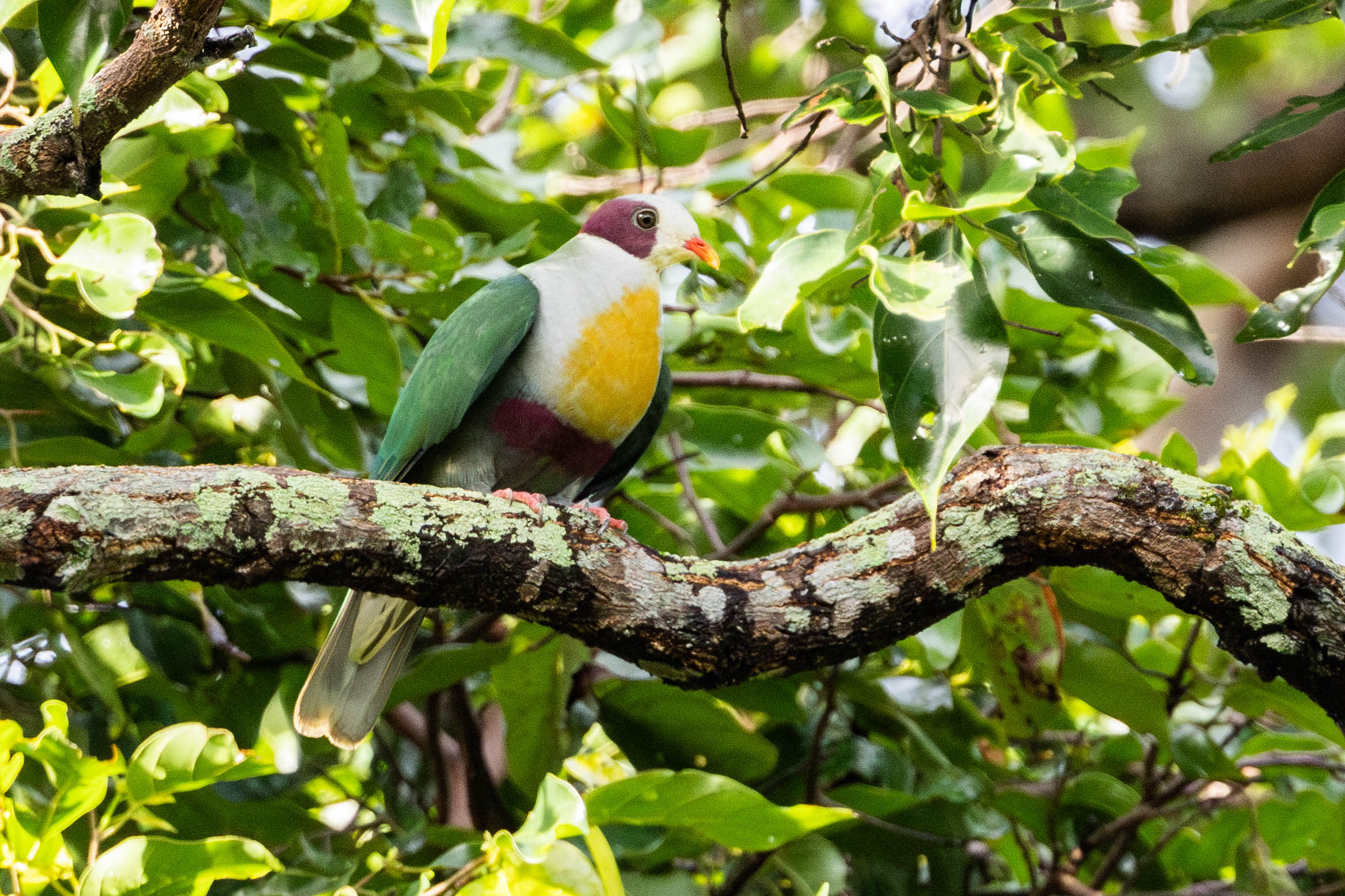
Then there are the Malkohas and Coucals. These birds are a bit larger than a crow, with long tails, and sometimes striking colorations. They’re also what is best described as “skulkers”. That is, they’re always on the move, sticking to thick forest cover. This can make them frustrating photographic subjects – you often see them for a fleeting moments, and rarely the entire bird at once. It’s usually a wing here, a tail there, then gone. The low light of the tropical forest adds to the challenge. Though, with a lot of determination and a bit of dumb luck we managed find a few, including this Red-crested Malkoha.
The Rufous Coucal was especially difficult to fully see. On one occasion we spent a number of minutes with a flock of 4-5 of them swirling all around, and all I managed was one lucky shot during a half-second window of opportunity. Don’t let this photo fool you – the bird was on the move, only in this position for a moment.
We saw the Philippine Coucal in a few locations. This view lasted longer than most, as we were hiding in the cover of a vehicle.
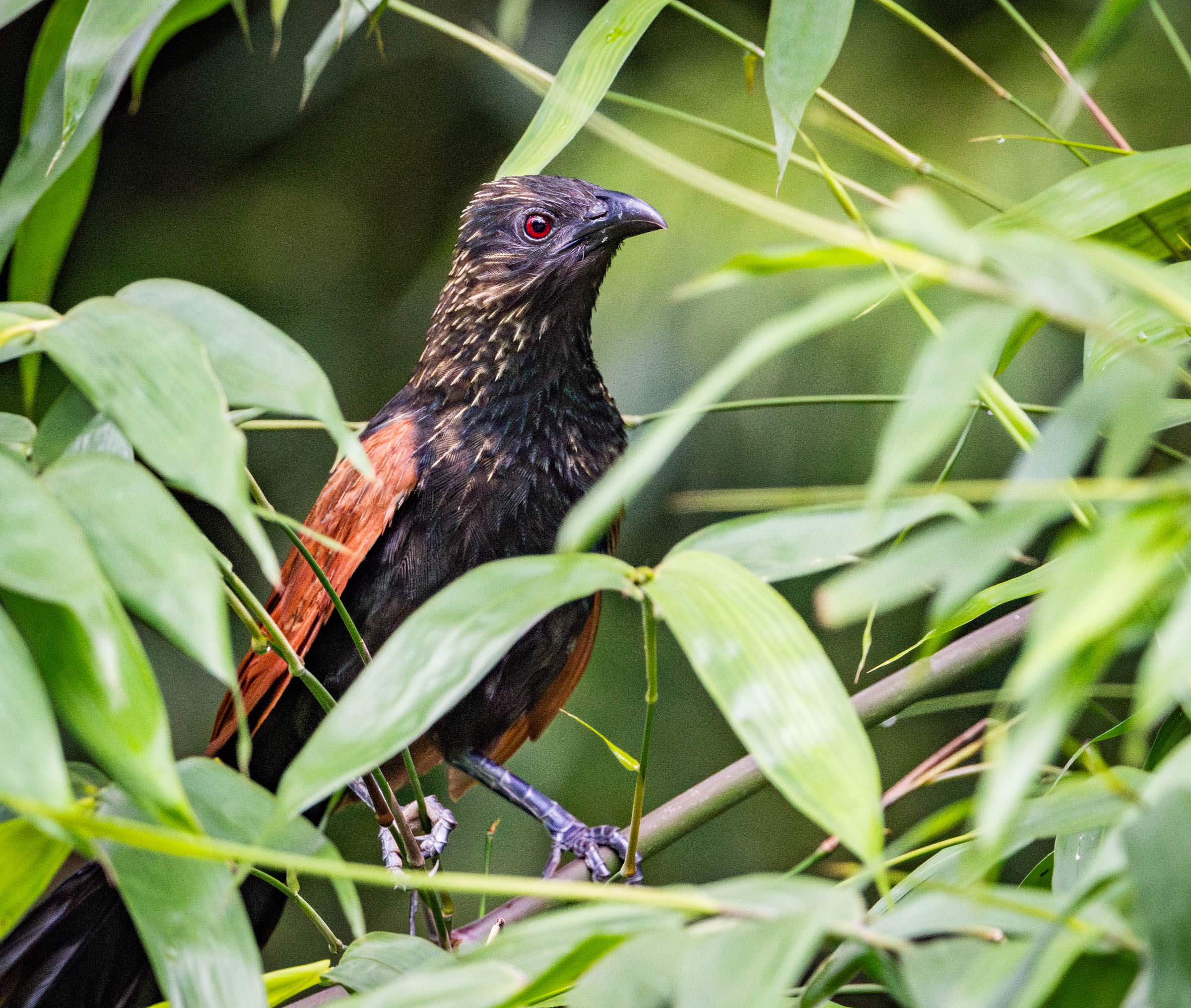
I wasn’t expecting to find Kingfishers in the deep forest, but it turns out that’s exactly where you find the Spotted Kingfisher. This one was signing softly from a high branch in the canopy – a few notes that almost go unnoticed. Though the coloration looks striking in the photo, the bird blends into the shady forest. It’s a good example of a bird I relied on Nick to help point out.

Birds aren’t the only large flying animal in these parts. Subic Bay hosts a large colony of two types of fruit bats, or more specifically Giant Golden-crowned Flying Foxes. One tree can hold dozens of these otherworldly creatures. As our day started, theirs was just ending.
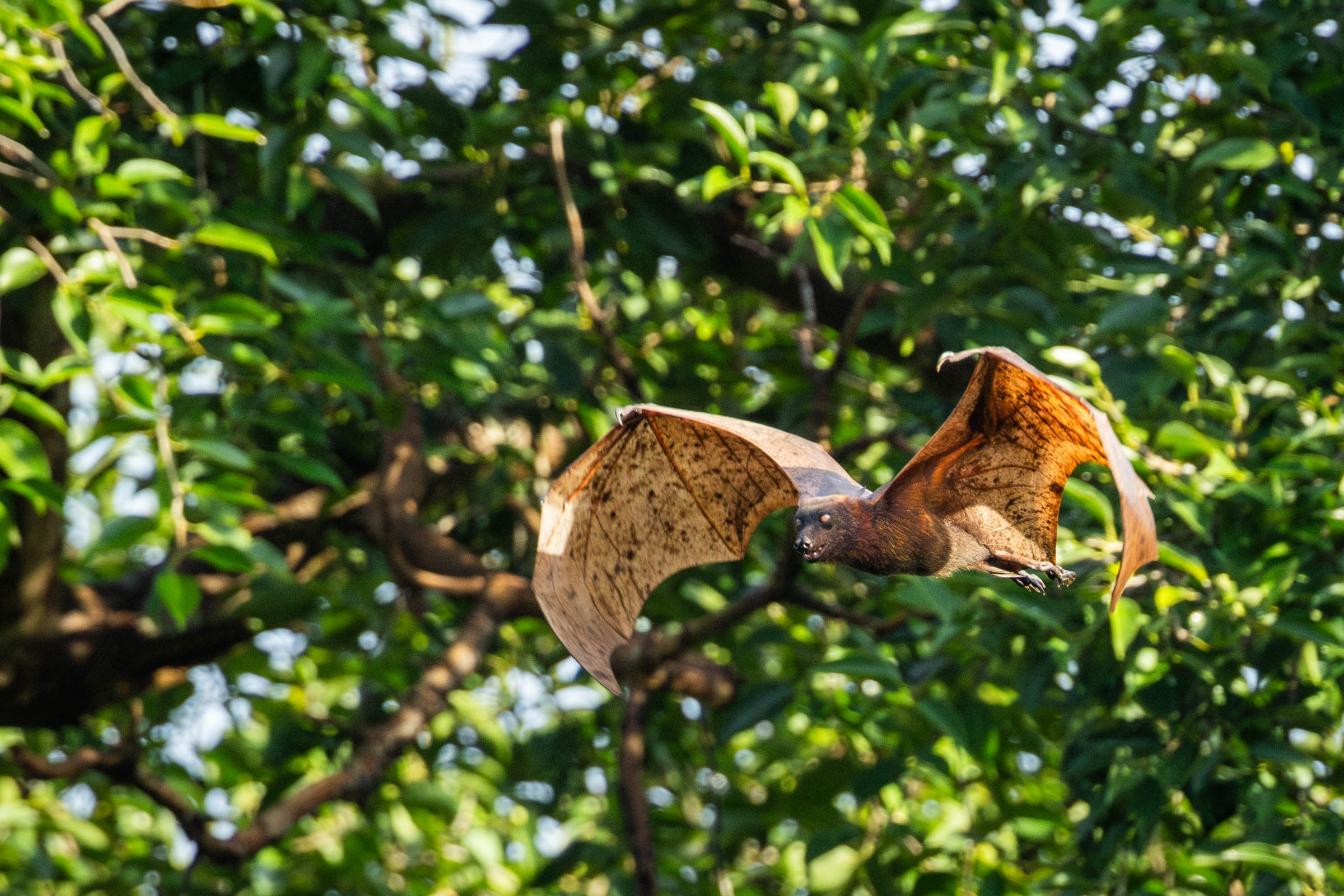
This thick lowland forest is also home to troops of Philippine long-tailed macaques.
These raucous monkeys make no secret of their presence, often thrashing about in the mid-forest up to the canopy.
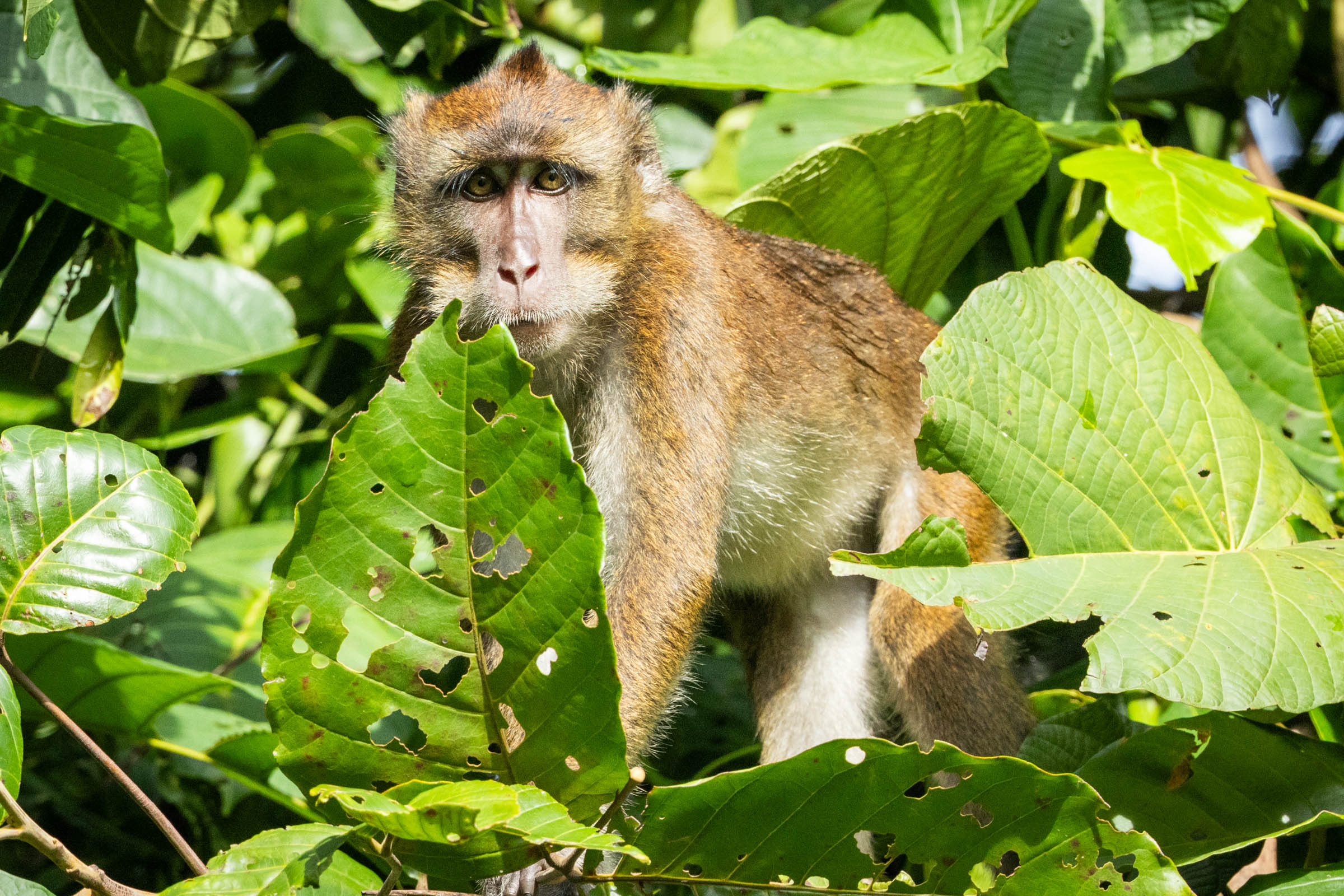
Getting back to the birds… The Coleto is another bird we saw in a variety of locations, mostly around Subic. This bird has a mostly naked head like a vulture, but is otherwise a songbird like any other.
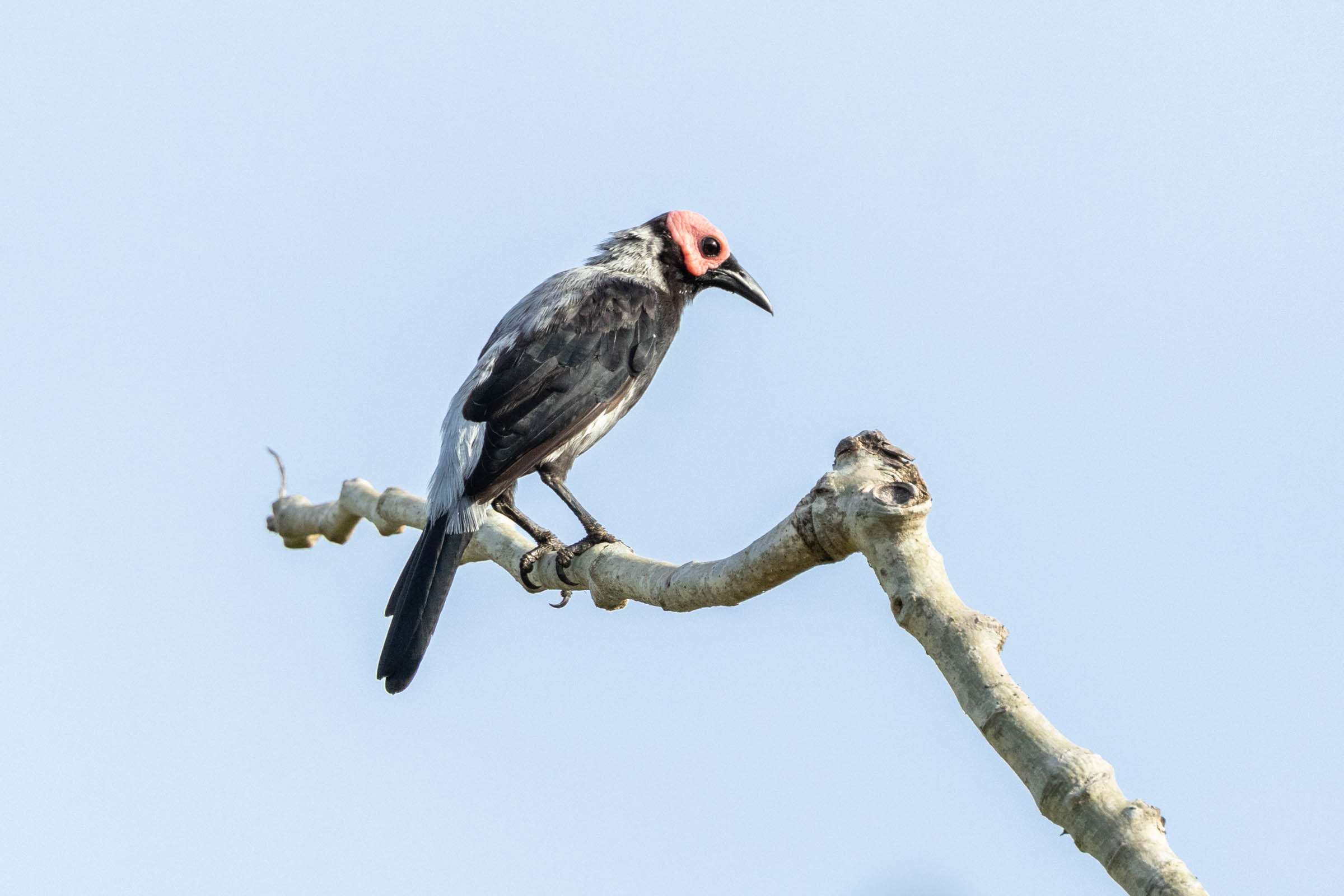
Speaking of bald heads… The Luzon Hornbill is another bird we found in multiple locations. These prehistoric fruit-eating birds behave like gentle giants. Various species of hornbill are found throughout southeast Asia and into Africa, but the Philippines is home to a number of endemics like these.
What tropical forest would be complete without at least a couple parrots? This Guaiabero was resting quietly on a sheltered branch.

While these Blue-naped Parrots were having lengthy discussions out in the open.
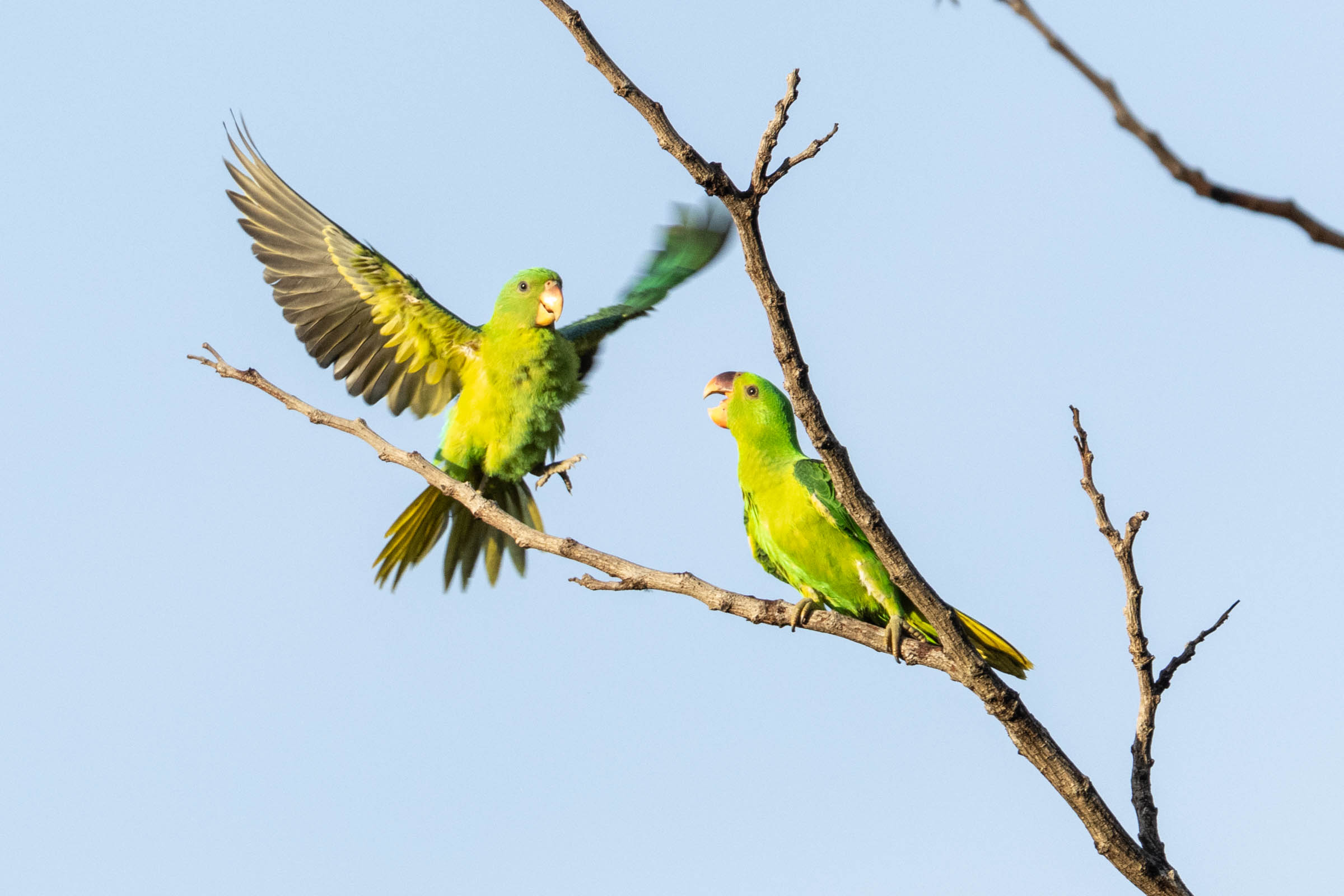
Down the road, this Philippine Hawk-Eagle was planning its next move.
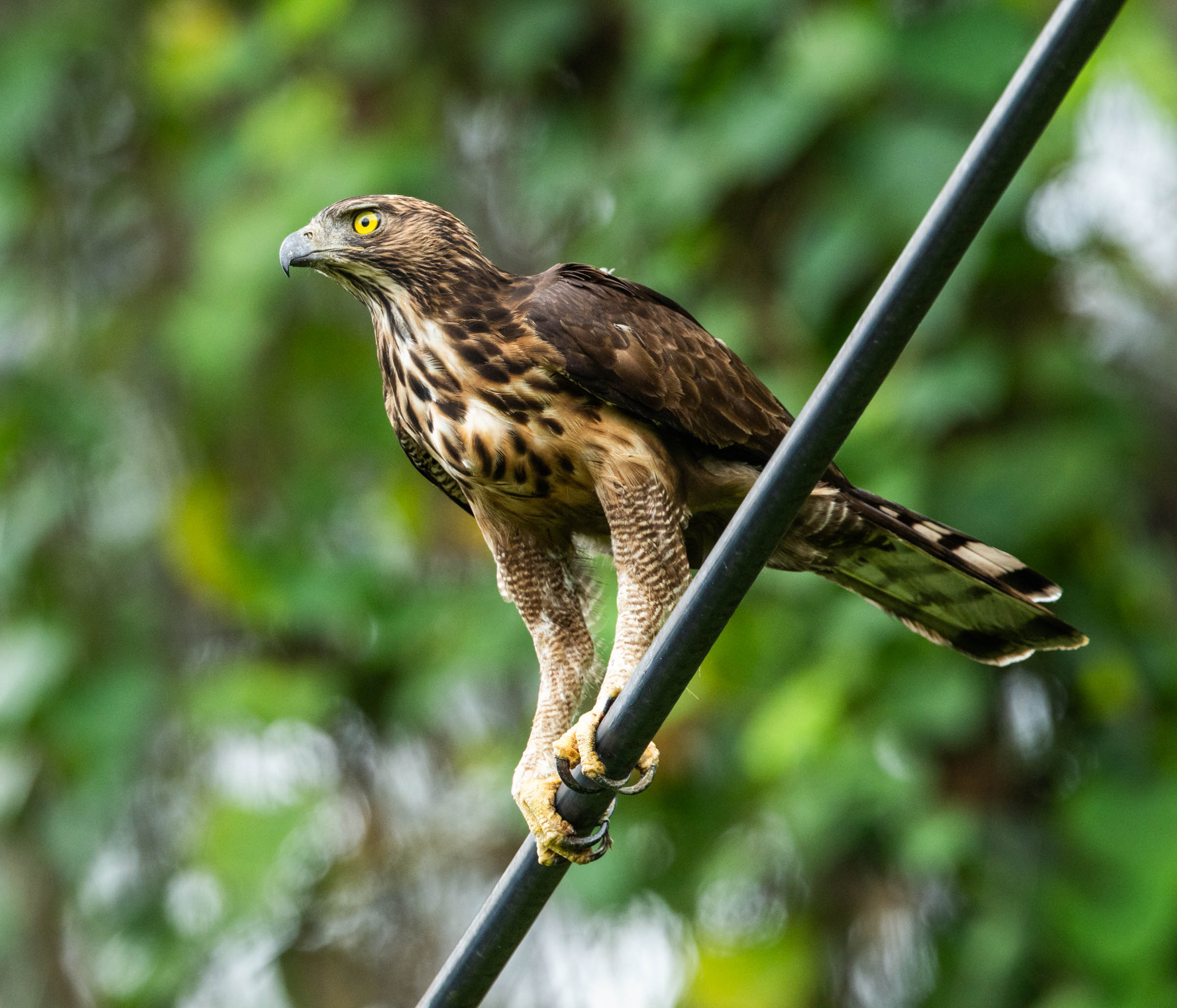
After bidding goodbye to Subic, we headed back through Manila, then east toward Infanta, through the heart of the Sierra Madre mountains. The endlessly winding road headed up 1000 meters in elevation, sometimes on top of the ridges and then across steep slopes, with mid-elevation forests rising and dropping all around.
At a quick roadside stop, we were lucky to find this Gray-backed Tailorbird. These frenetic little songbirds are typically seen only as a blur as they whip through the undergrowth at lightning speed. We were lucky to find this one pausing just a moment to preen. The Tailorbird is so-named because of its habit of sewing-together large leaves to make its nest. Coincidentally, it happens to have a song sounding a lot like “Tail-or-bird… Tail-or-bird…”
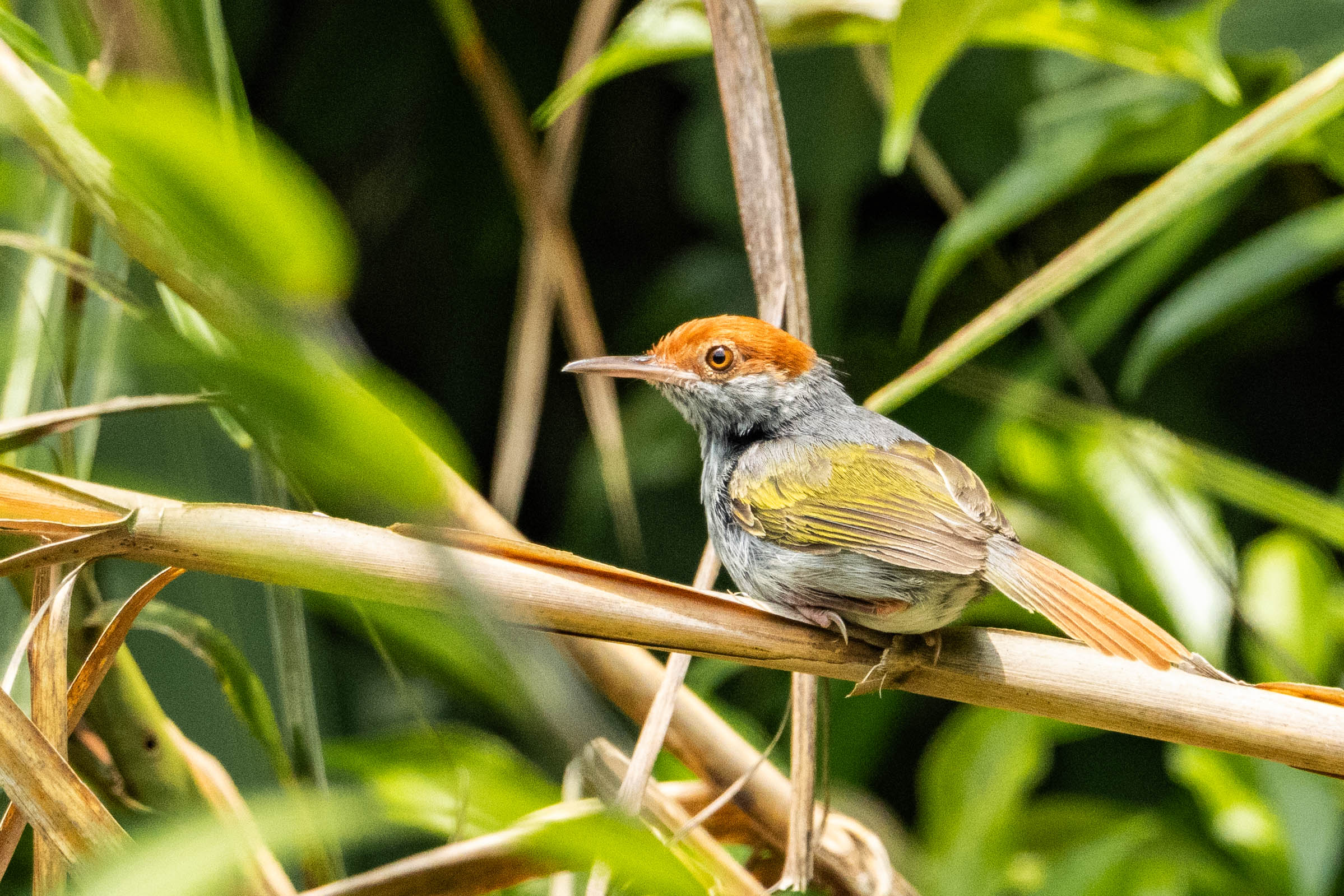
Meanwhile, down the slope a bit, this Coopersmith Barbet peeked-out of the branches. This bird is found in similar forests throughout tropical southeast & south Asia.
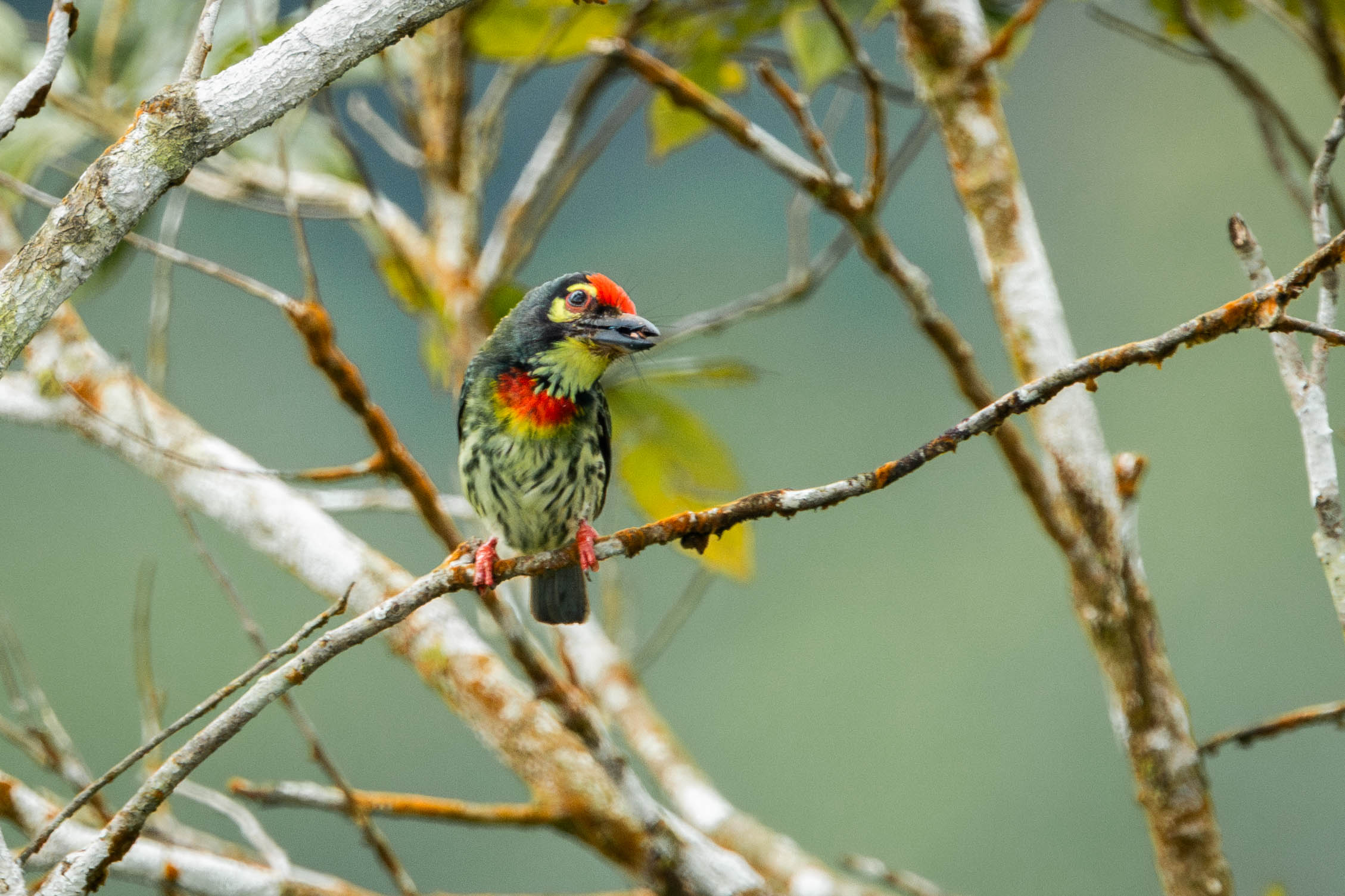
The Blue-headed Fantail is one bird I’d seen and photographed on previous visits to the Philippines. But here I saw a lot more of them, and was able to observe their eponymous habit of quickly fanning their tail in the forest canopy.

At another quick stop along the side of the road, Nick noticed this bird tending to a nest in the shadows. This is apparently a Buzzing Flowerpecker (I’d previously thought it a female Flaming Sunbird). It came and went from the nest so quickly, it took a matter of persistence and luck to capture a shot of it.
I caught this female Bicolored Flowerpecker pecking little fruits.
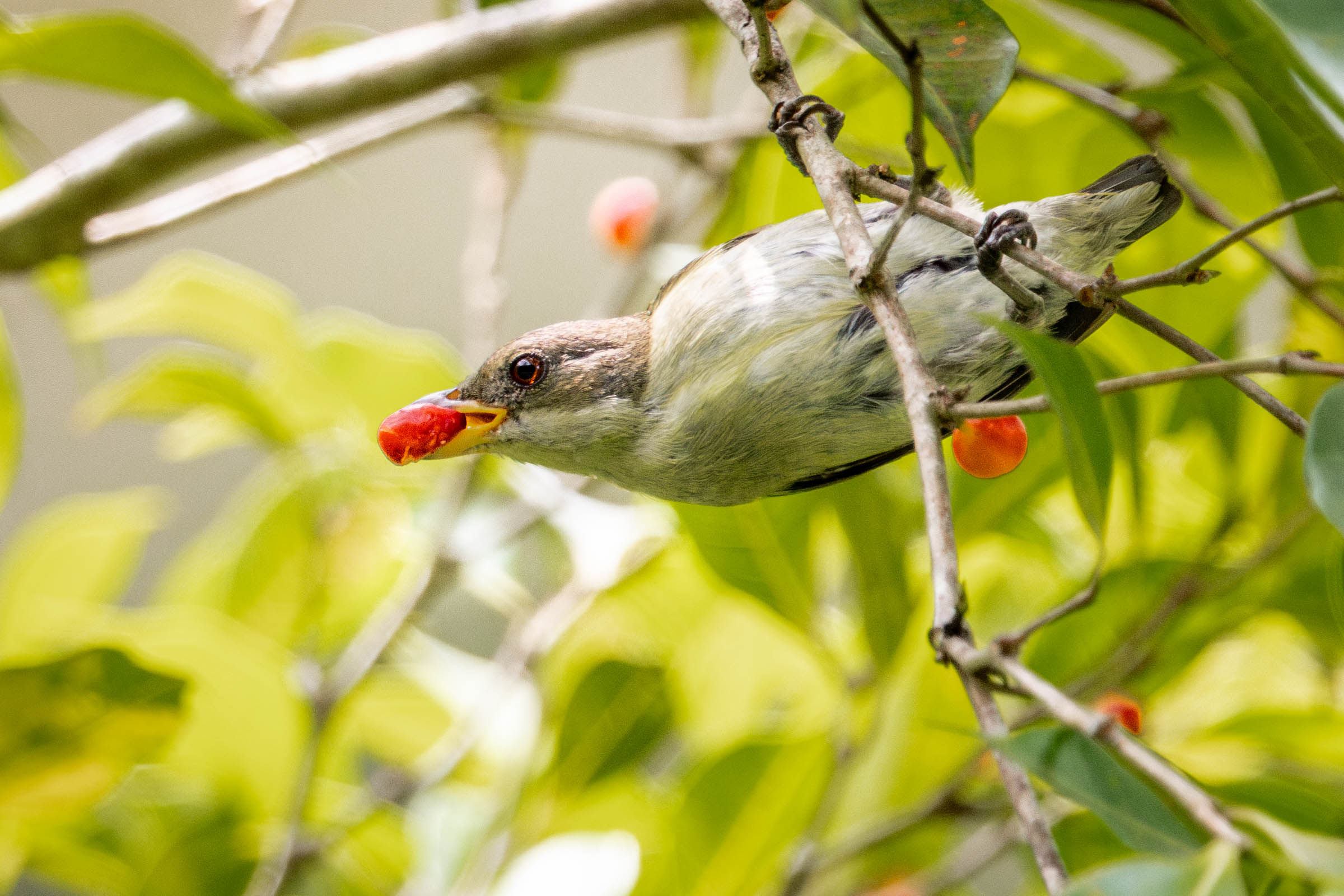
The Yellow-vented Bulbul was perhaps the most regular bird we observed in nearly all locations. These birds must have a liking for spiders, as I observed them flying around with spiders in their beak like this on multiple locations. Perhaps it is a way of showing-off, “Look! I have a spider!”
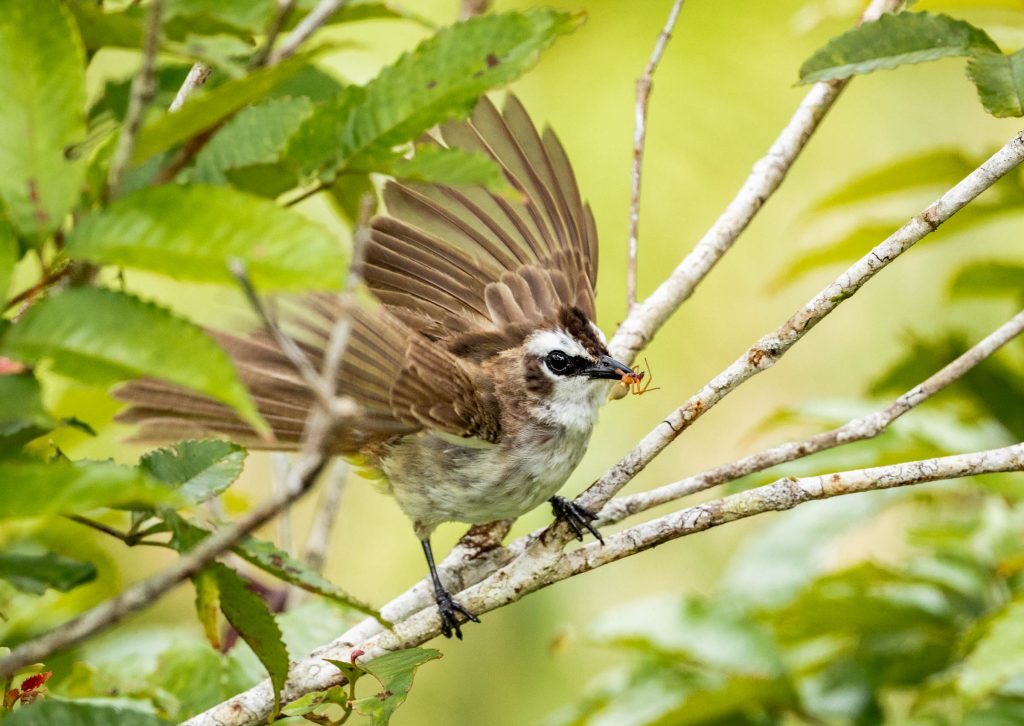
The Elegant Tit is another bird I’d seen on a previous visit to the Philippines. These birds are distant relatives of the chickadees of North America, and share bits of their song and tonality. The vocal heritage must run deep.

Another cousin to familiar western birds is the Sulphur-billed Nuthatch. This one was doing typical “nuthatch things” on the side of a tree.
There are a variety of White-eyes found throughout Asia. But the Yellowish White-eye is only found in the Philippines. This one was testing the ripeness of some fruit.
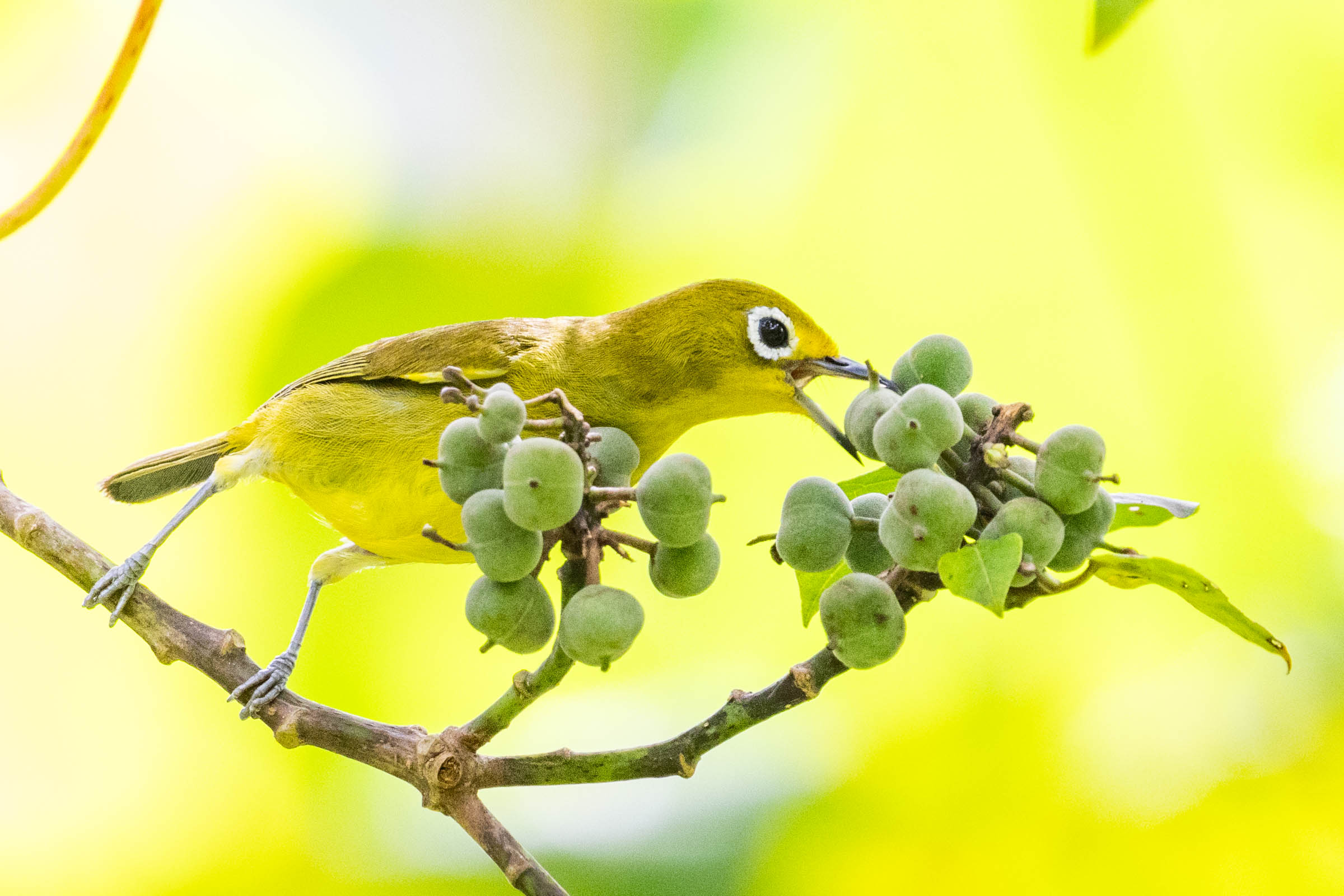
We rounded-out the common woodpeckers of Luzon with this sighting of the Philippine Pygmy Woodpecker.

We had another surprise visit with a Philippine Serpent-Eagle. This one was perched high above a steep slope, with a great view to the forest environment below.
We’d hoped to find a couple more target species. One of these was the Whiskered Pitta, a shy colorful bird that rummages through the forest floor. In the past, Nick explained that you could find Pittas along the road – it was great habitat for them. However, the government has now installed miles of landslide abatement along the main road, extending quite a way up the slopes. This consists of wire mesh over a porous plastic tarp. I’m not sure how effective it is at stopping landslides, but it has driven-out the Pittas.
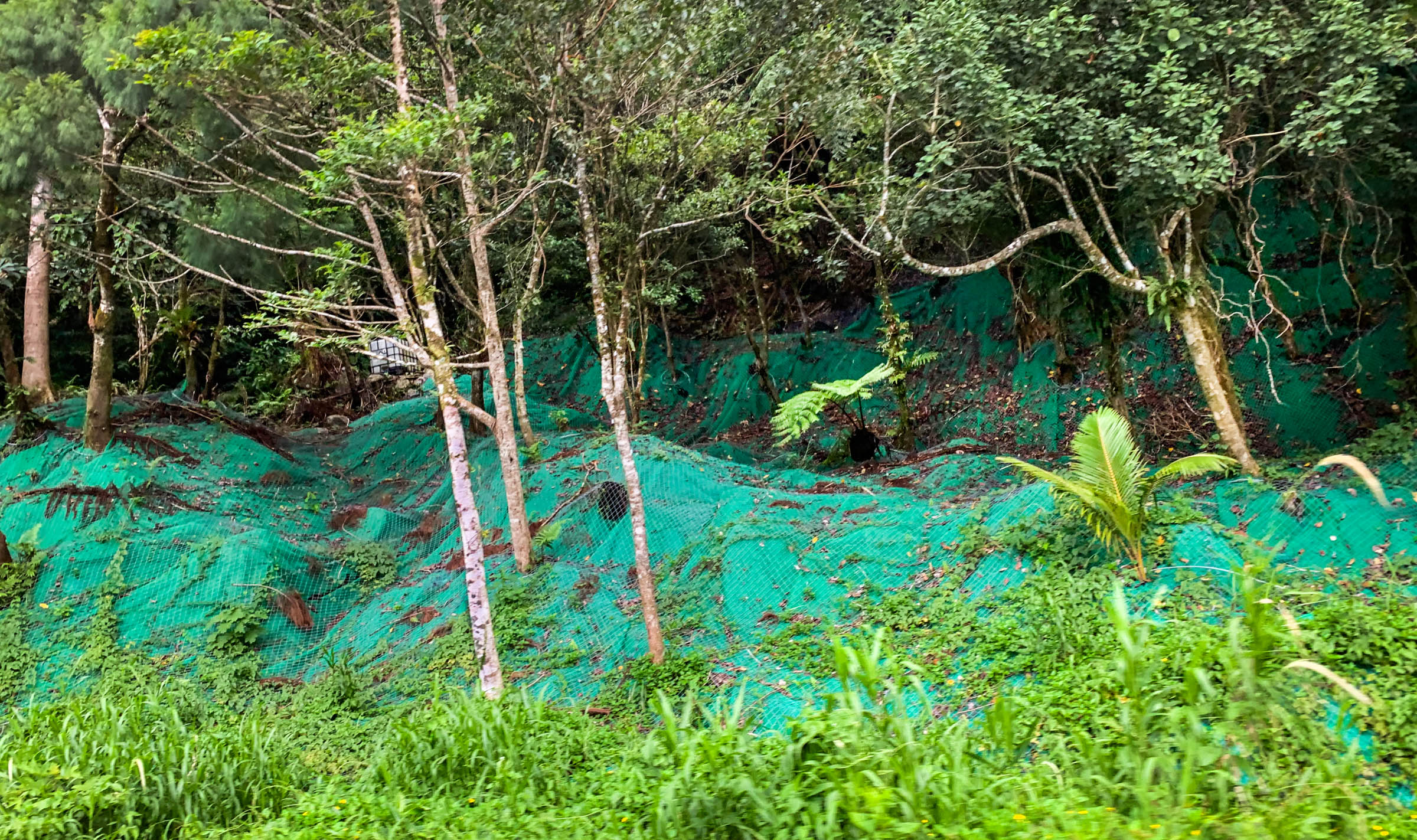
So, we tried an improvised trail that Nick had previously found. It was much better Pitta habitat – a steep leafy slope away from the road crews. But there we encountered a different problem – in a 15 minute hike, we found about 4 snare traps set by “hunters”. These consisted of a sapling bent down over an improvised platform. If anything steps on the platform, the trap is sprung – the sapling springs up – rapidly yanking a snare that snags the legs of whatever sprung the trap. This leaves the victim hanging a few feet from the ground. The primary target of the hunters are Red Junglefowl – the wild cousin of the domestic chicken. But the traps don’t discriminate. A Pitta is heavy enough to fall victim to these traps.
We sprang this trap, and it was evident how effective it could be. I questioned why people would do this, when chickens aren’t all that expensive. Sure, it’s a free chicken, but you’d have to check the trap regularly to make sure you retrieved the chicken before something else got it, or it died and putrefied in the tropical heat. Plus, it’s a lot of work to set and maintain these traps. This was brutally steep terrain – not an easy hike. I think the real answer is that for some people “this is what they do”. They were raised doing this, and it’s part of their identity. They see this perhaps no differently than many westerners see fishing. There is no legal protection for the birds, and little awareness or concern of their plight among the general population. Nick explained that there was a risk of worse traps ahead – shotgun traps set at knee-height, intended for wild pigs. Set one of those off, and you’re going to lose a leg. So, we turned around and headed on.
This isn’t a problem unique to the Philippines, it’s worldwide in many forms. I hope that as time goes on, our collective awareness and innate human sense of caring about the nature we live amongst will overcome these traditions, but will that happen before all the Pittas are gone? As we drove further down the road, we saw a little girl doing a great impression of a dove call. “Her brother is hiding in the bushes with a slingshot”, Nick explained. I hoped he was wrong. I hoped the little girl was calling-in the dove only to see if it could be done, perhaps to get a closer look at it, and admire its beauty. If Nick was right, I simply hoped the next generation would still have doves to call. Perhaps they would see the world around them with a different perspective.
Another bird we tried to see was the Rufous Hornbill – a striking cousin of the more common Luzon Hornbill we’d seen elsewhere. We went to a spot with a commanding view, where these birds had been heard and spotted regularly. But a road construction crew was working just around the corner, making a ton of noise and likely scaring-off the birds. As we waited in the early morning light, we were fortunate to heard their distinctive call just once, echoing up from the steep canyon below. The hornbills were out there, just not for us to see on this day.
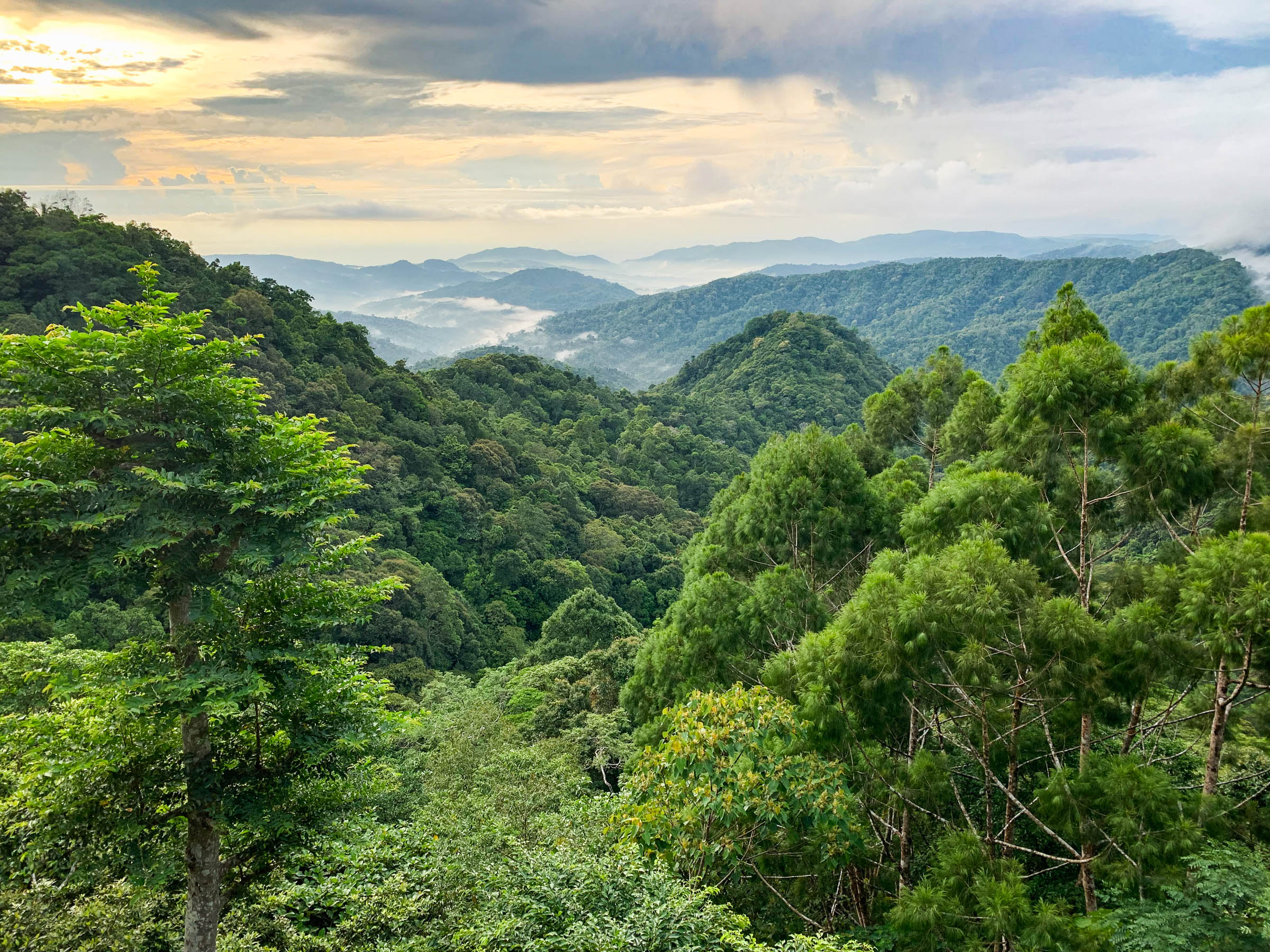
After this, we moved south, near the lush municipality of Los Baños. This town is home to a branch of the University of the Philippines, as well as the International Rice Research Institute (IRRI). There are a number of natural parks and old trees in the town, extending to thick forests as one rises to the upper reaches of Mt. Makiling just to the south.
The skies above town were filled with House Swifts. These birds are almost always ‘on the wing’, effortlessly gliding and picking-off insects.
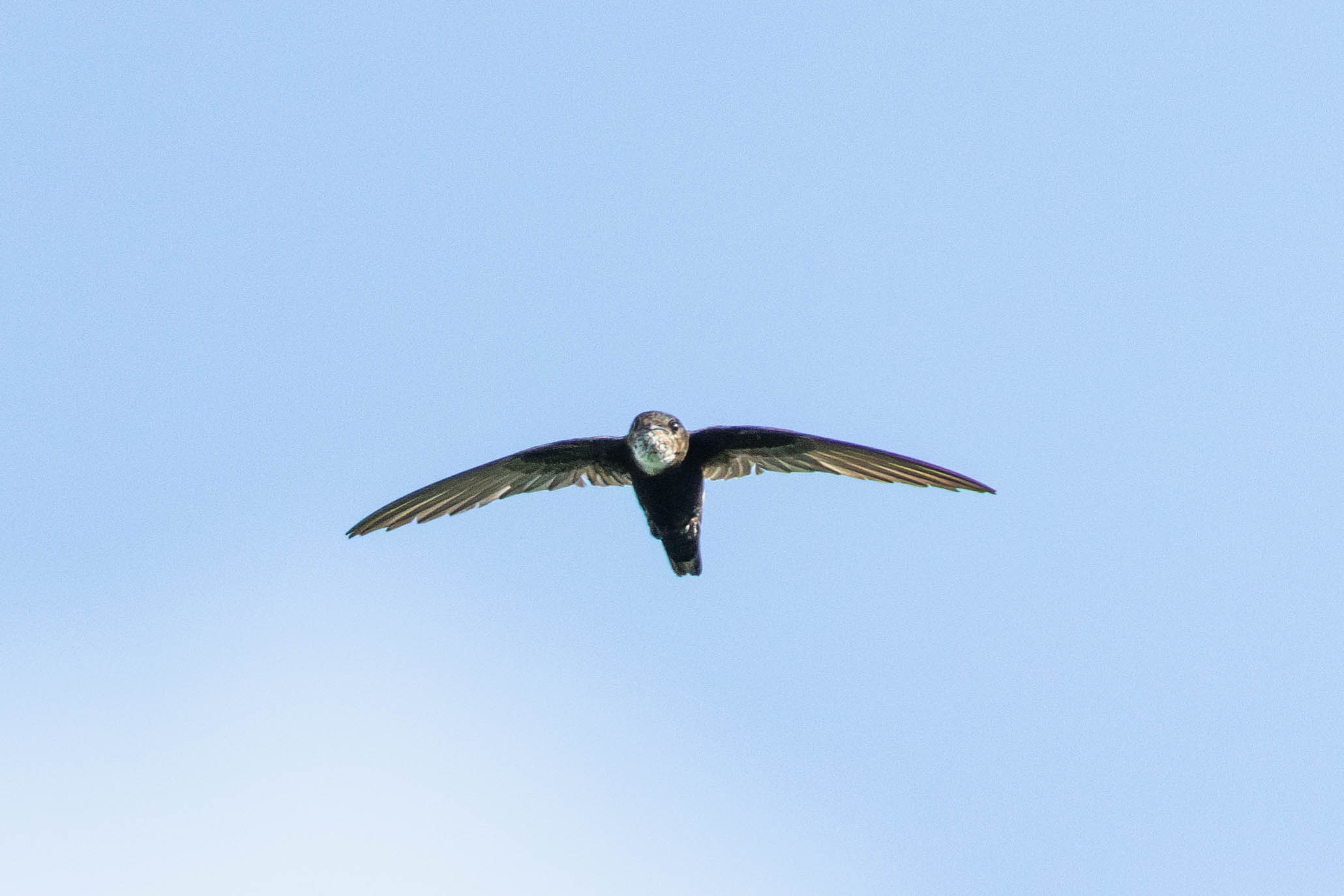
We headed up the slopes of Mt. Makiling at dawn. The thick canopy gobbled-up nearly all the light before it could reach the ground level.
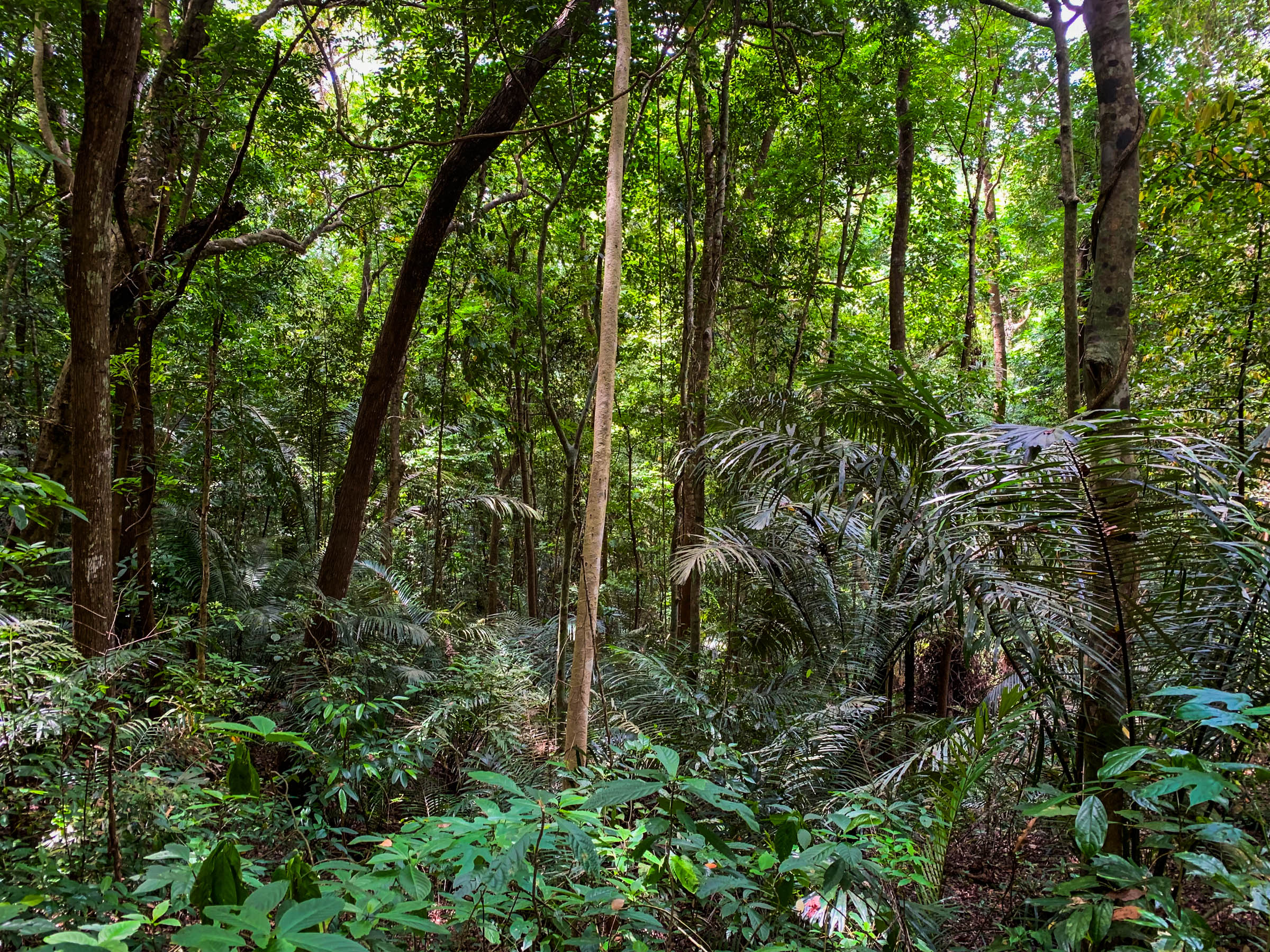
If you want to see certain birds, this is the time to do it. As the day is breaking, many hungry birds are more actively foraging for food. This sighting of the Luzon Bleeding-heart was perhaps the highlight of the entire trip. These birds are notoriously shy, and uncommonly seen in the open. Nick almost jumped out of his skin when we saw this one along the road in the dim morning light. This is one well-named bird.
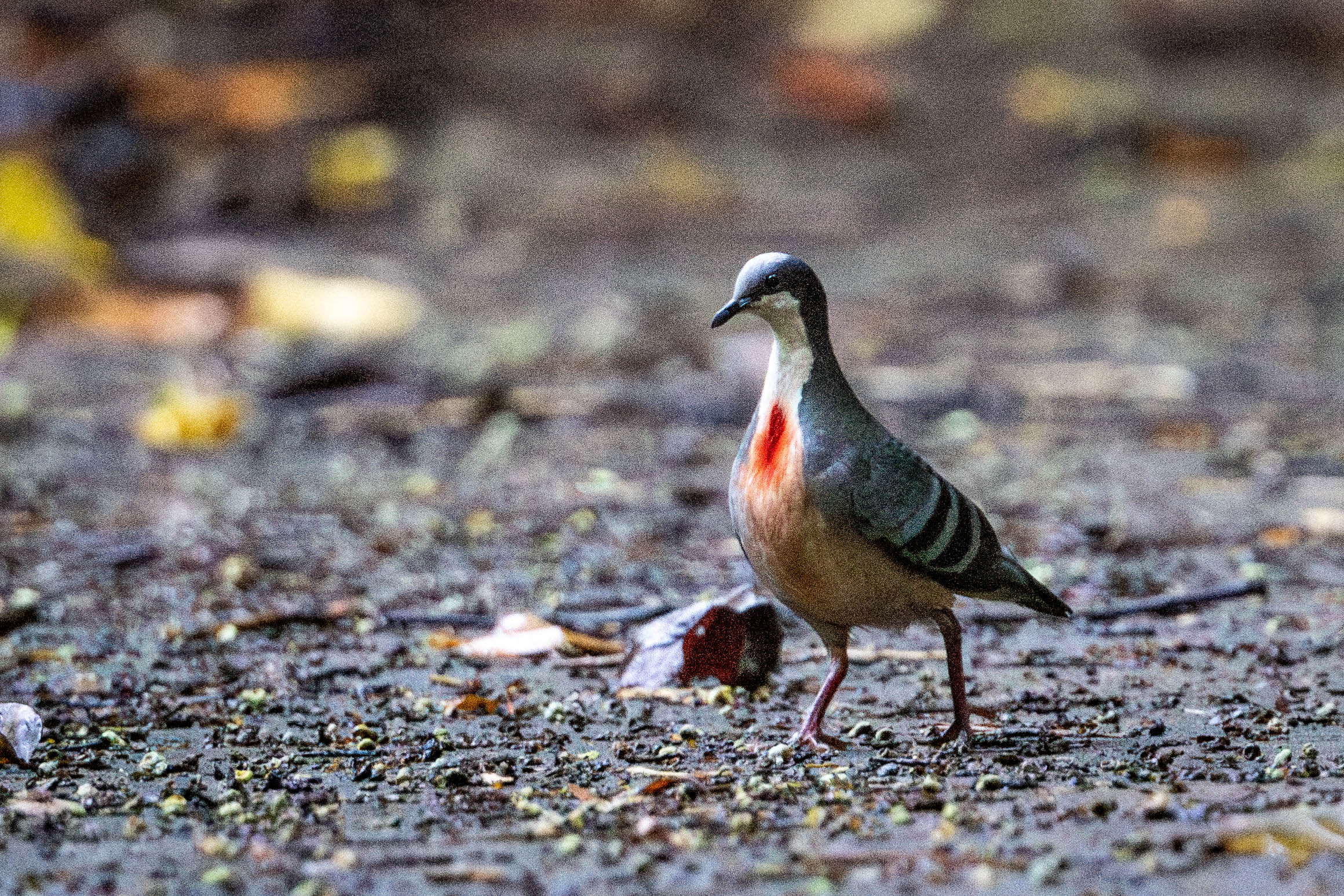
One bird that had teased us at many locations – being heard but never seen – was the White-browed Shama. Finally, one appeared for just a moment in the forests of Mt. Makiling.
Birds aren’t the only colorful forest residents. This large spider (about 6 inches from tip to tip) was waiting patiently for a meal to wander into its web.
Perhaps that meal would be a Damselfly like this one.
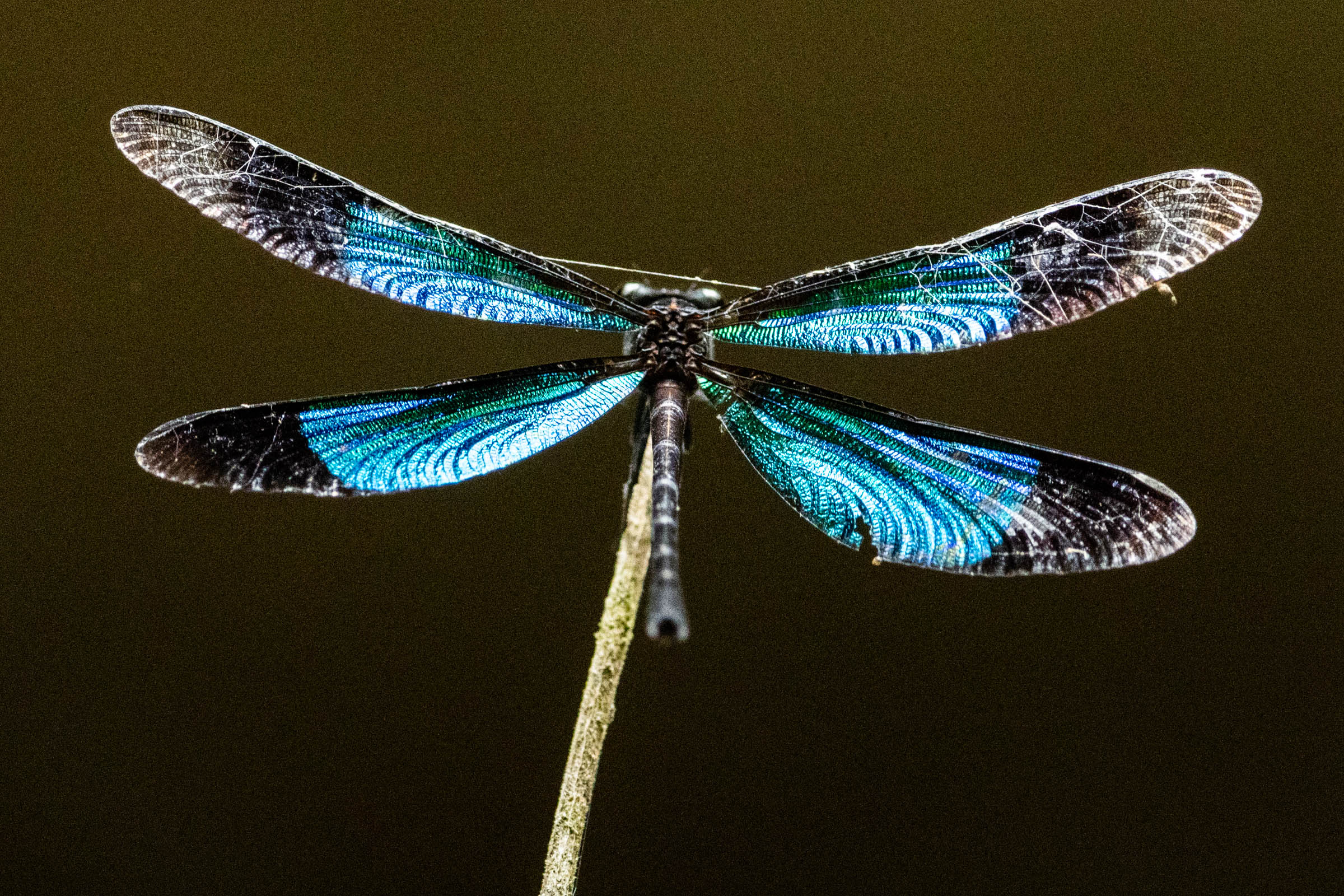
We spent a good deal of time trying to get a decent view of the striking Scale-feathered Malkoha. One of them teased us for 30 minutes, skulking about the forest canopy on Mt. Makiling. The following morning, we were surprised and delighted to find another more cooperative subject right in town.
The gardens and forests in town attract all sorts of birdlife, including this Yellow-wattled Bulbul.
As night descended in the town of Los Baños, owls like this Luzon Boobook were just starting their day.
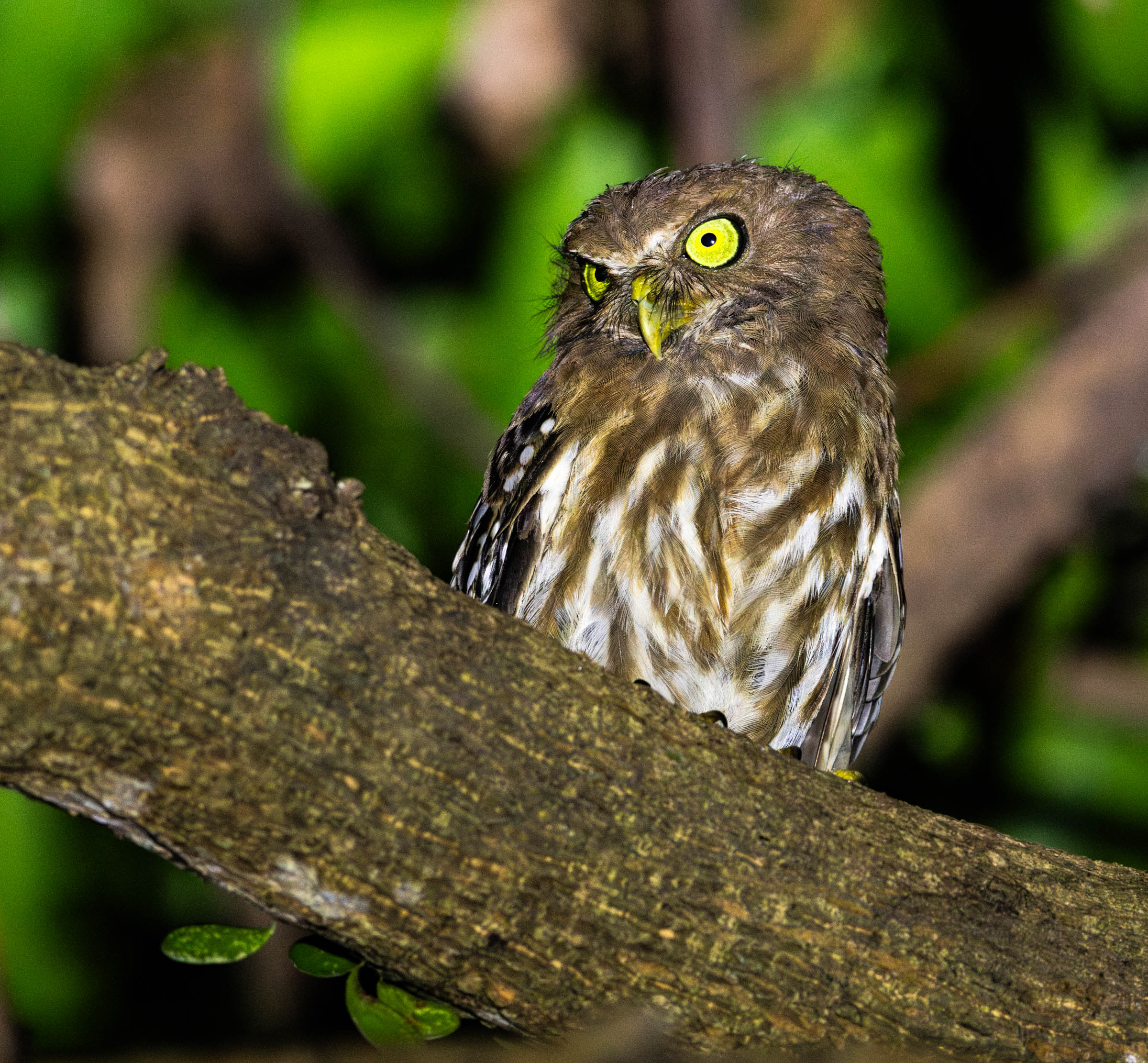
Away from town, the farms and rice paddies provide a different kind of habitat, attracting birds like this Paddyfield Pipit, who stopped to take a dust-bath in the road.
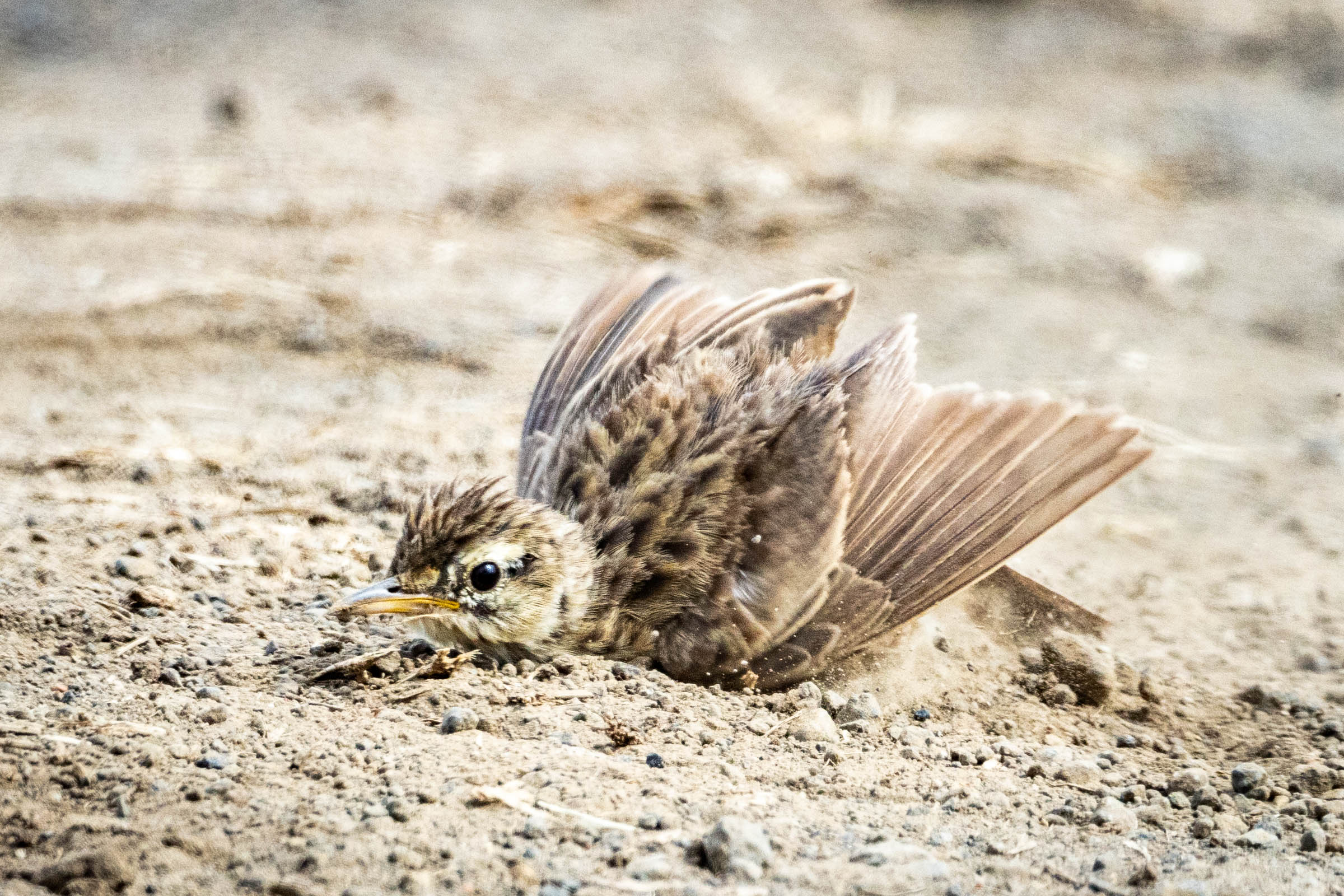
Blue-tailed Bee-eaters kept watch from wires above the fields.

This Philippine Blue-flycatcher wasn’t shy at all – it entertained us with a song, providing a close-up view.
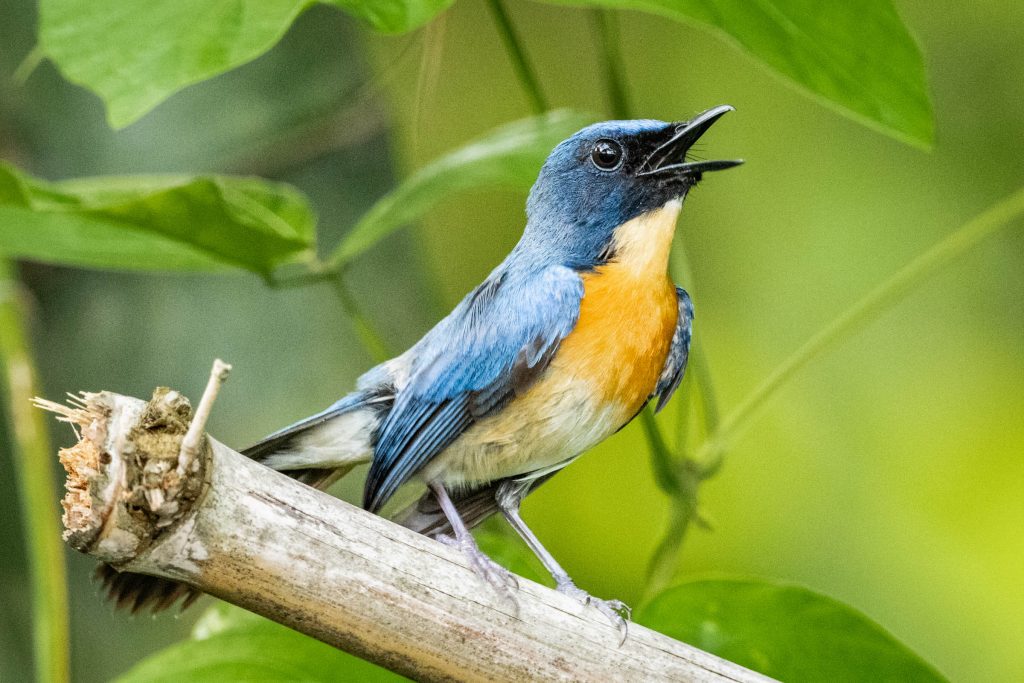
Back in a forest canyon just outside of town, we spent a good deal of time tracking-down this Northern Indigo-banded Kingfisher. This shy little bird likes to perch on rocks just above bits of still water, where it hunts for small fish.
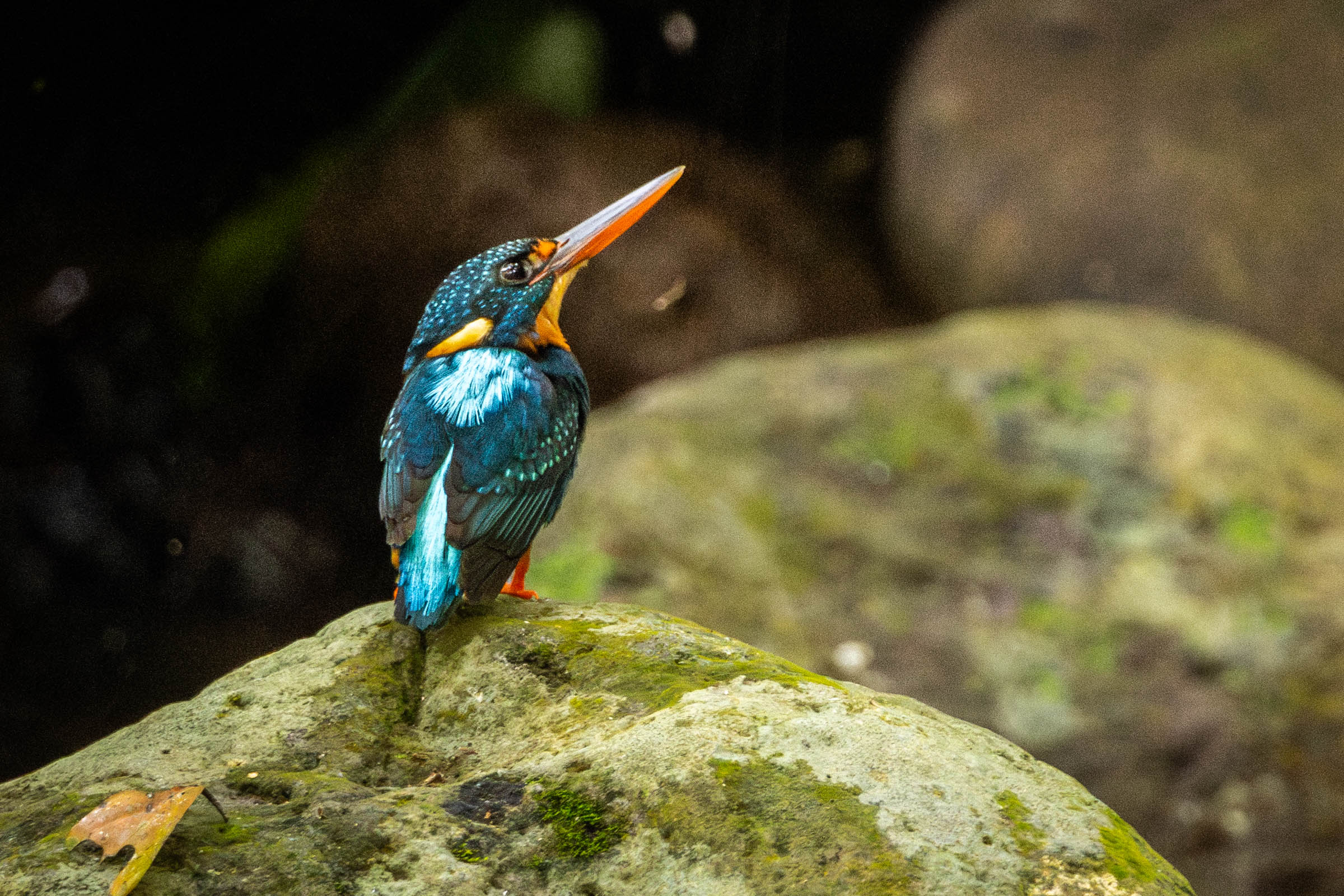
After this, it was time to head back to Manila, the airport and eventually home. This trip was quick but rewarding. I learned so much not only about the birds of the Philippines, but the land, the people and the culture. Nick and I spent a lot of time talking about all sorts of subjects. He has a passion for what he does, and an almost magical ability to pick-out the subtlest signs of a bird nearby. Often I was almost bewildered as he pointed to a shadowy spot high in the canopy “There’s the bird, on that branch behind the leaves”. I felt like a novice in comparison, as it sometimes took me too long to follow along. But sure enough, the bird was inevitably there. Nick has also put in a lot of time and effort toward saving some of the Philippines most endangered species, like the Sulu Hornbill. Only about 50 of these birds remain in the dwindling forests of the remote southern island of Tawi Tawi. Nick is working hard to help install nesting boxes high on the trunks of the remaining trees. It’s difficult and laborious work, but necessary if there is to be a future for this fragile species.
In total, I saw 80 new species, and was able to photograph about 50 of them. The photography slowed-down the birding a bit, as I often needed time to linger on a subject, rather than running to the next location and racking-up sightings or “ticks”. For a more complete list of sightings and photos, you can see my eBird profile here. Just click through the links to see more photographs and checklists.
I hope to return to the Philippines and explore other habitats and additional islands. These birds face so many pressures, from expanding human presence to climatic changes and more. Most people go about their days unaware of these fascinating colorful companions sharing the landscape with us. Yet, they are there, coping with the world we leave for them, and doing their best to survive alongside us. I hope that simply by raising awareness of their presence in a blog post like this, I can make a small contribution toward helping their future survival.
